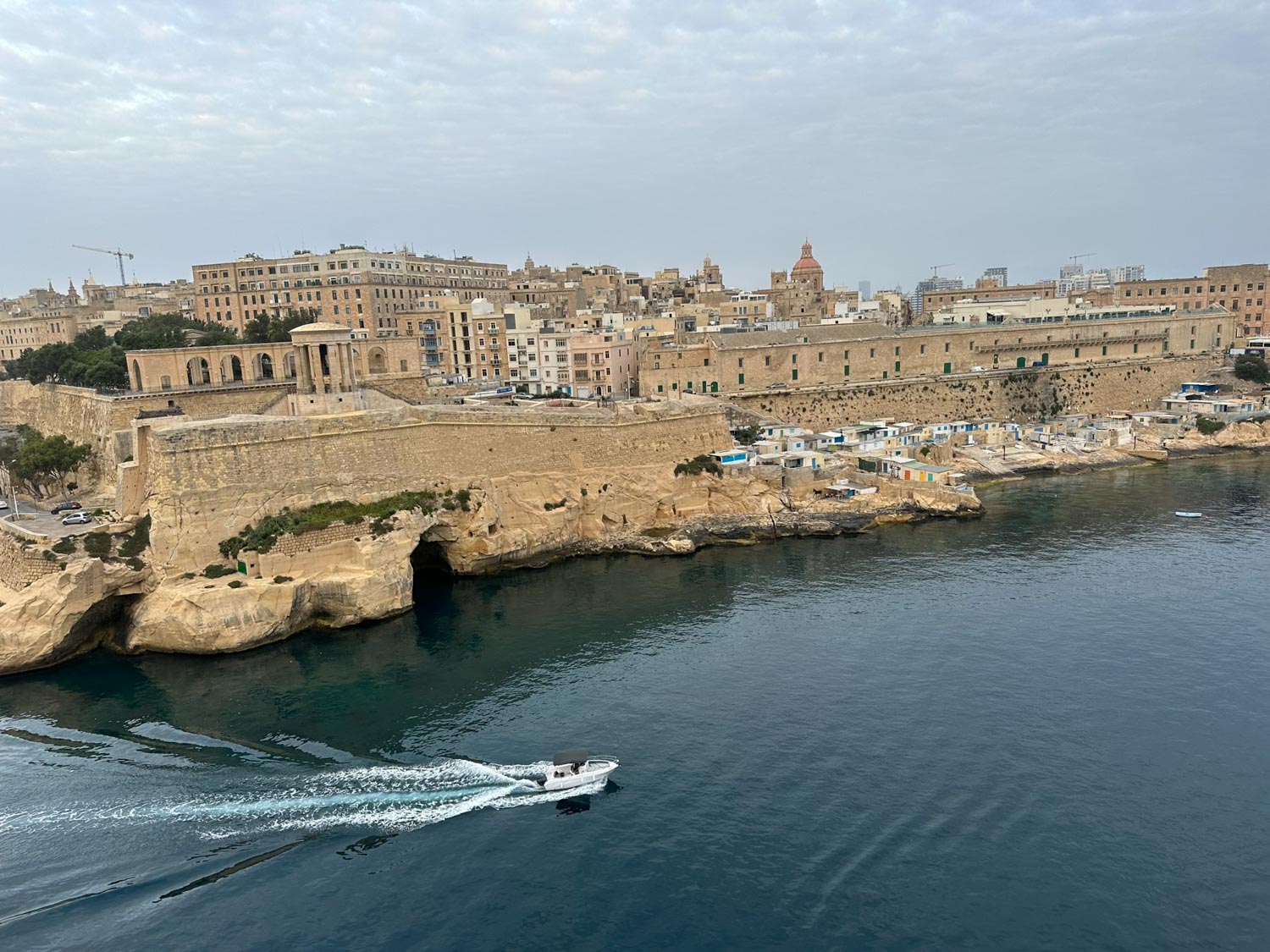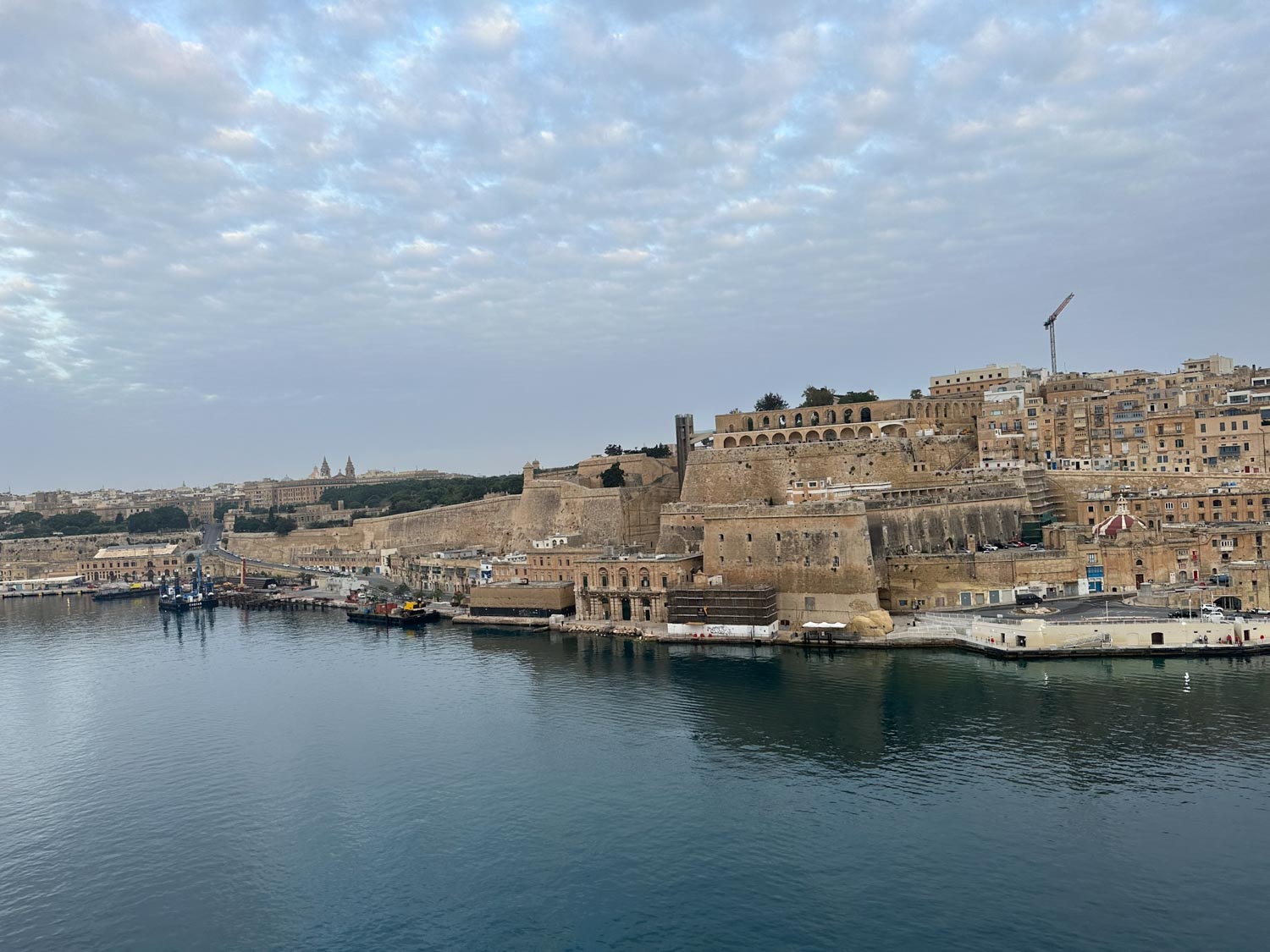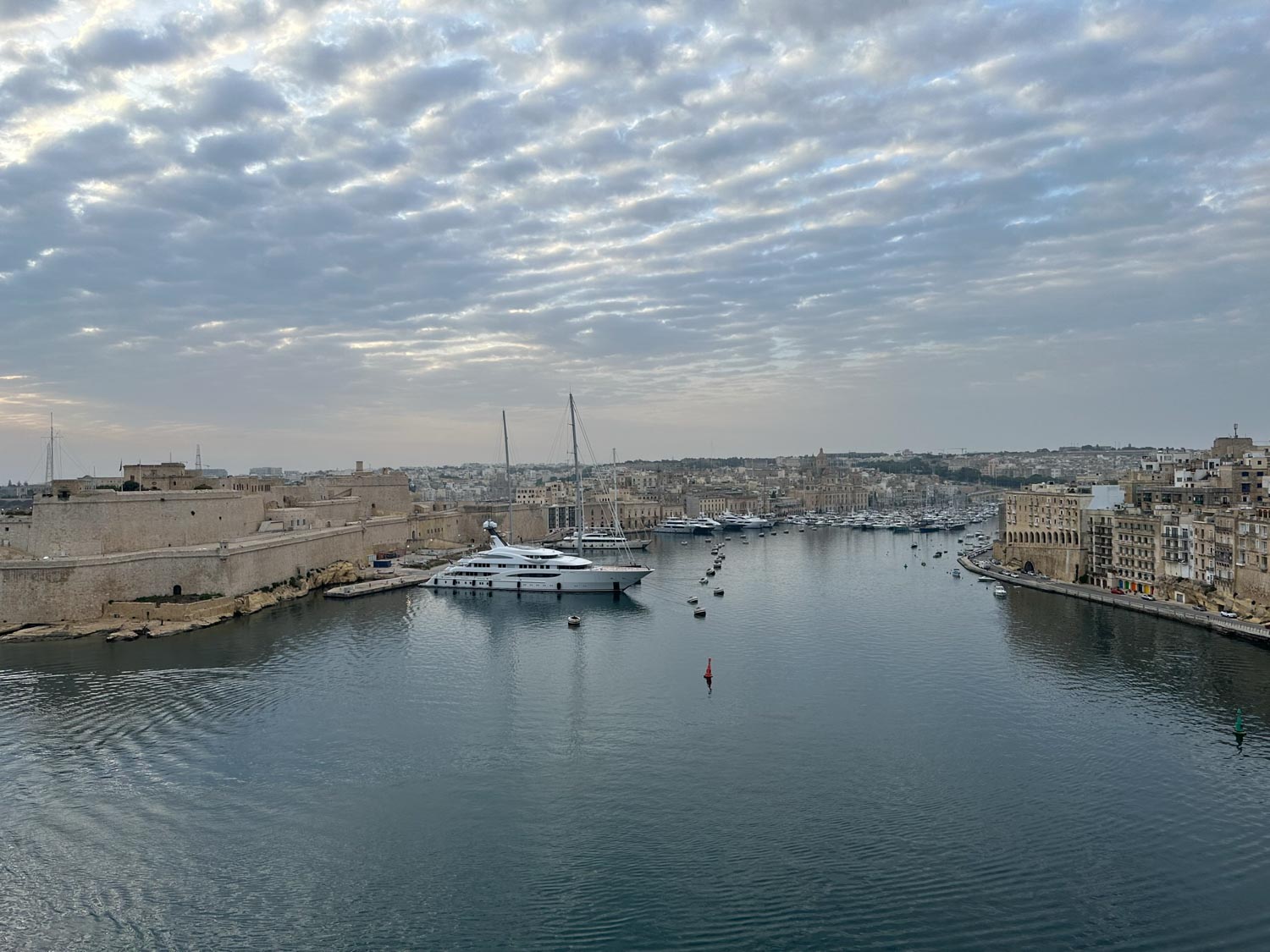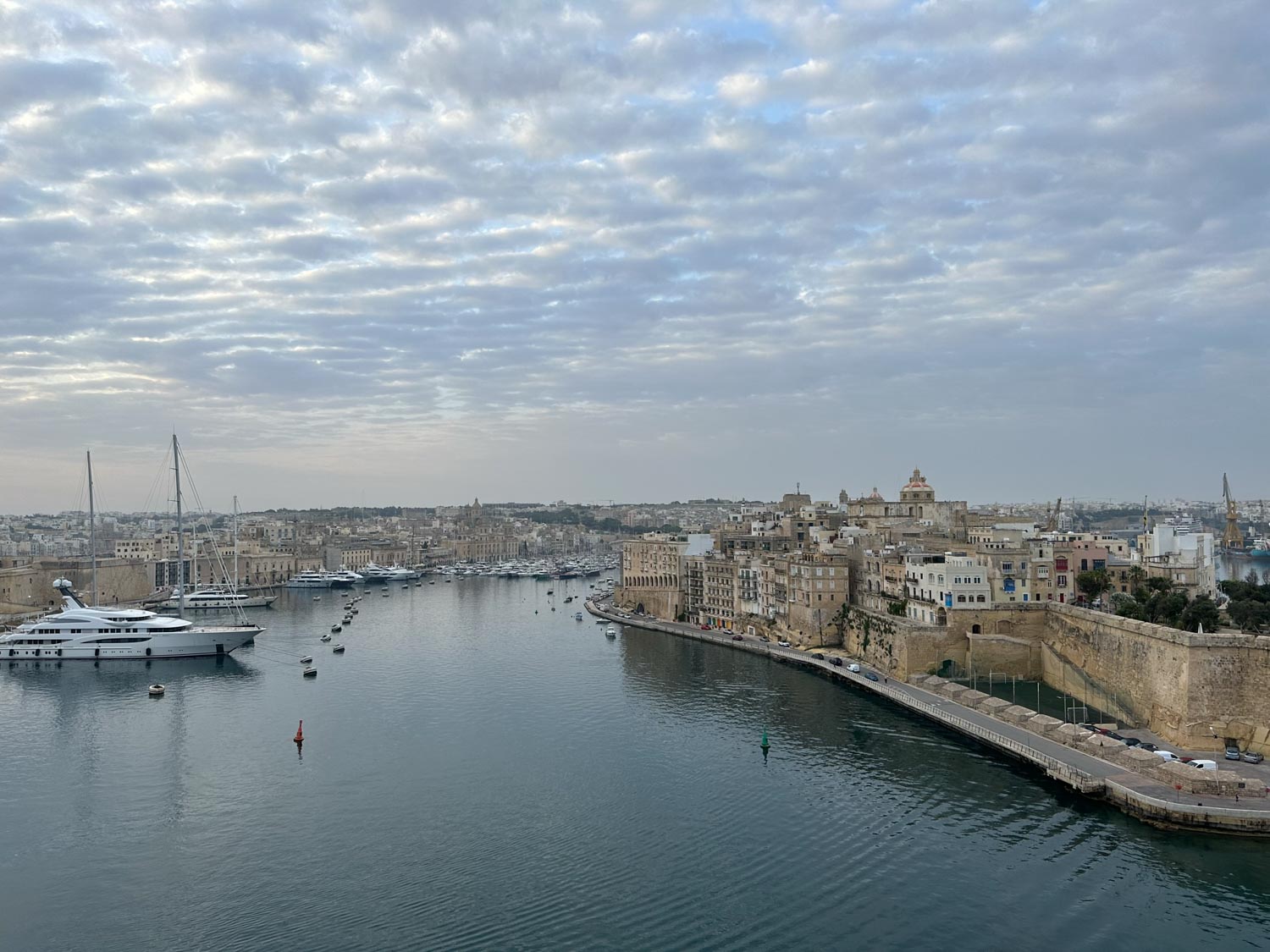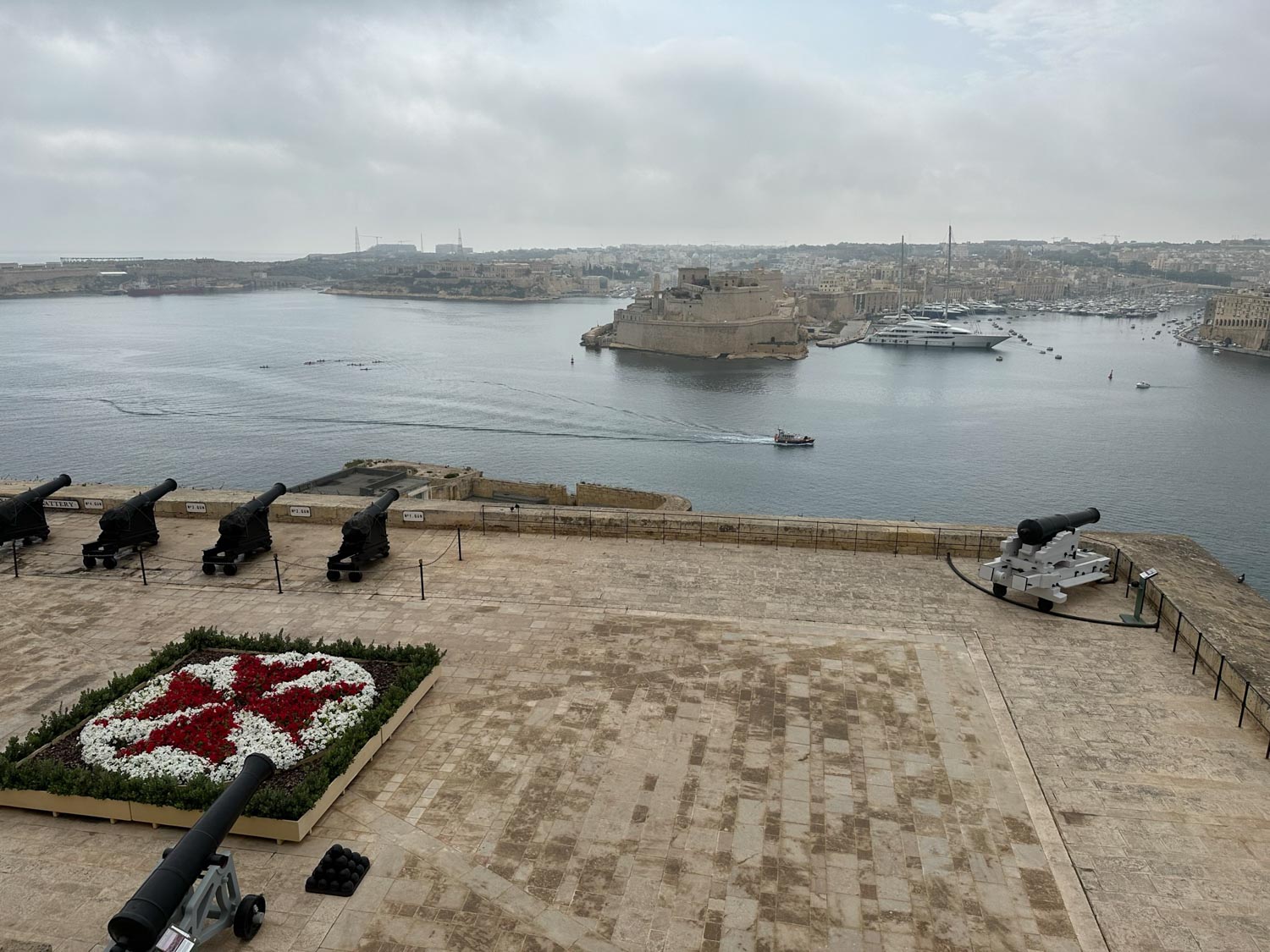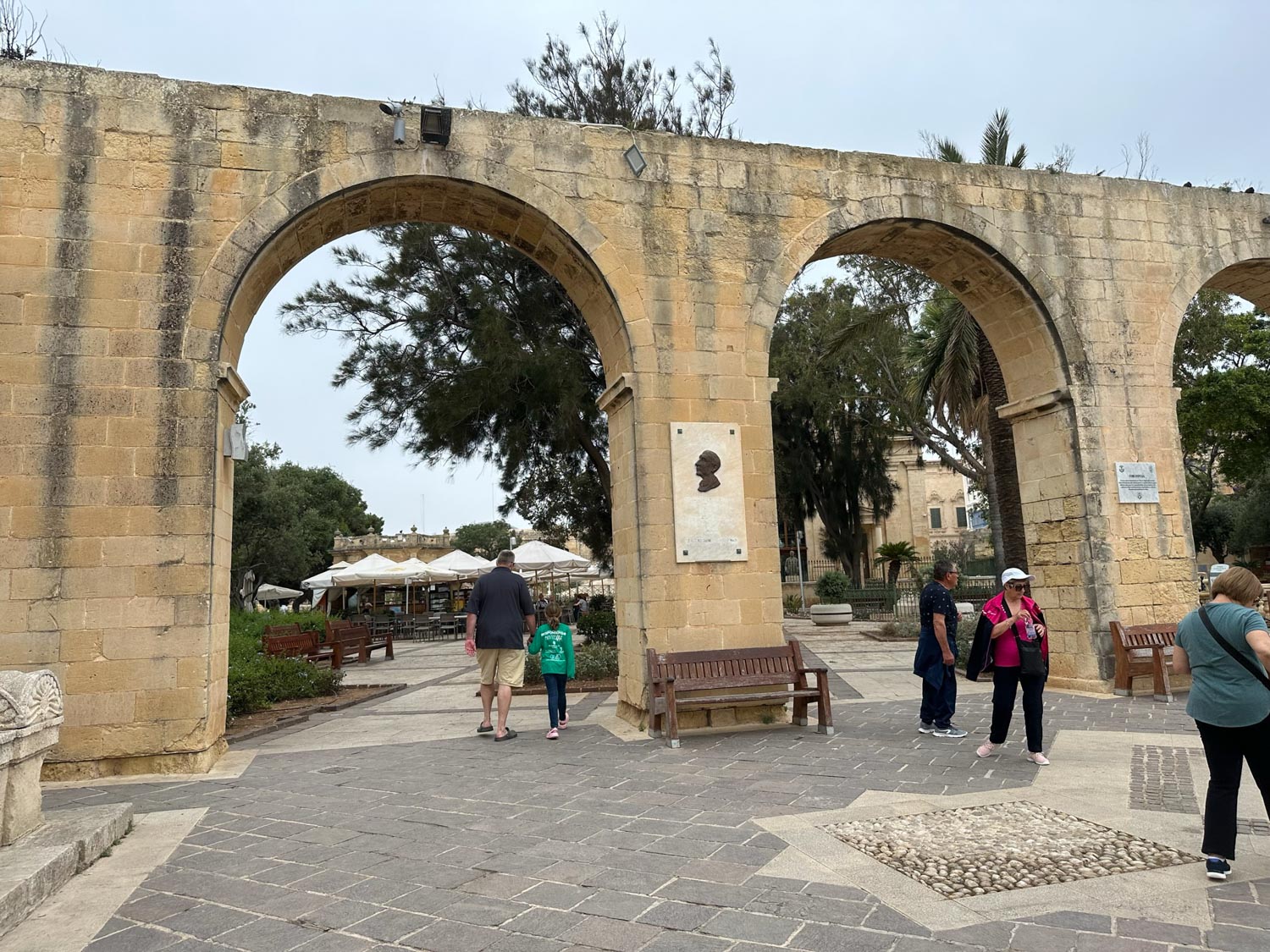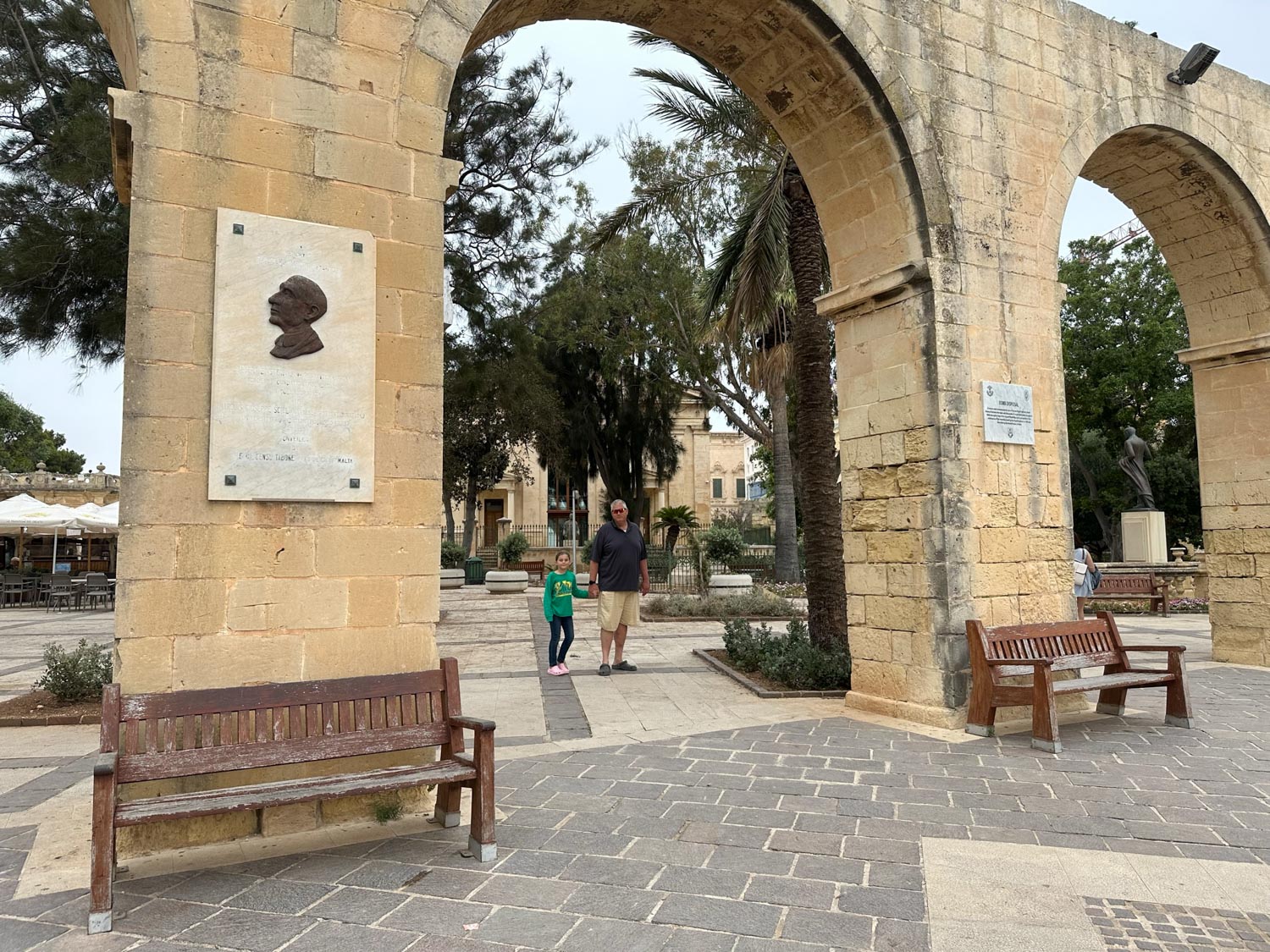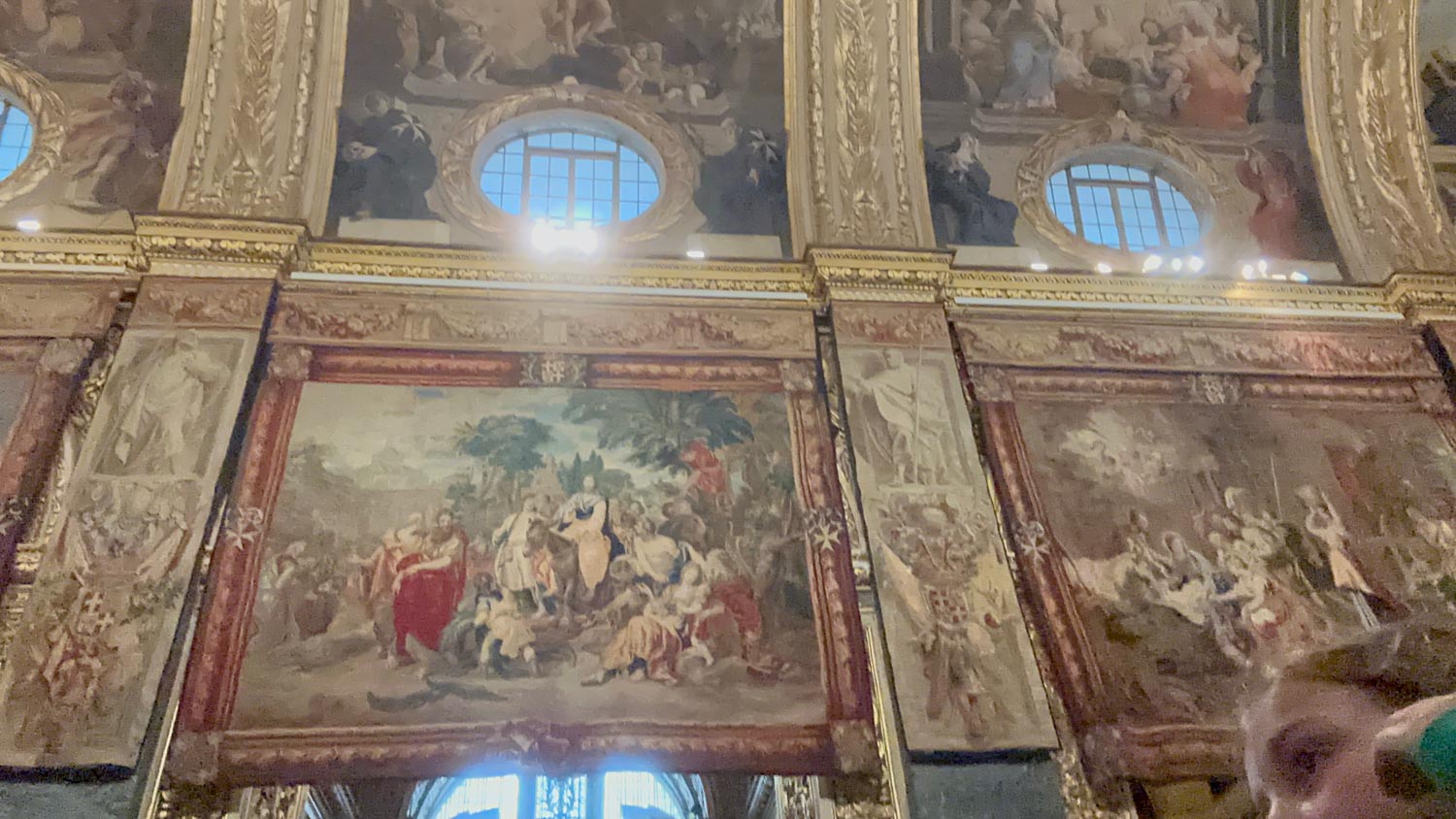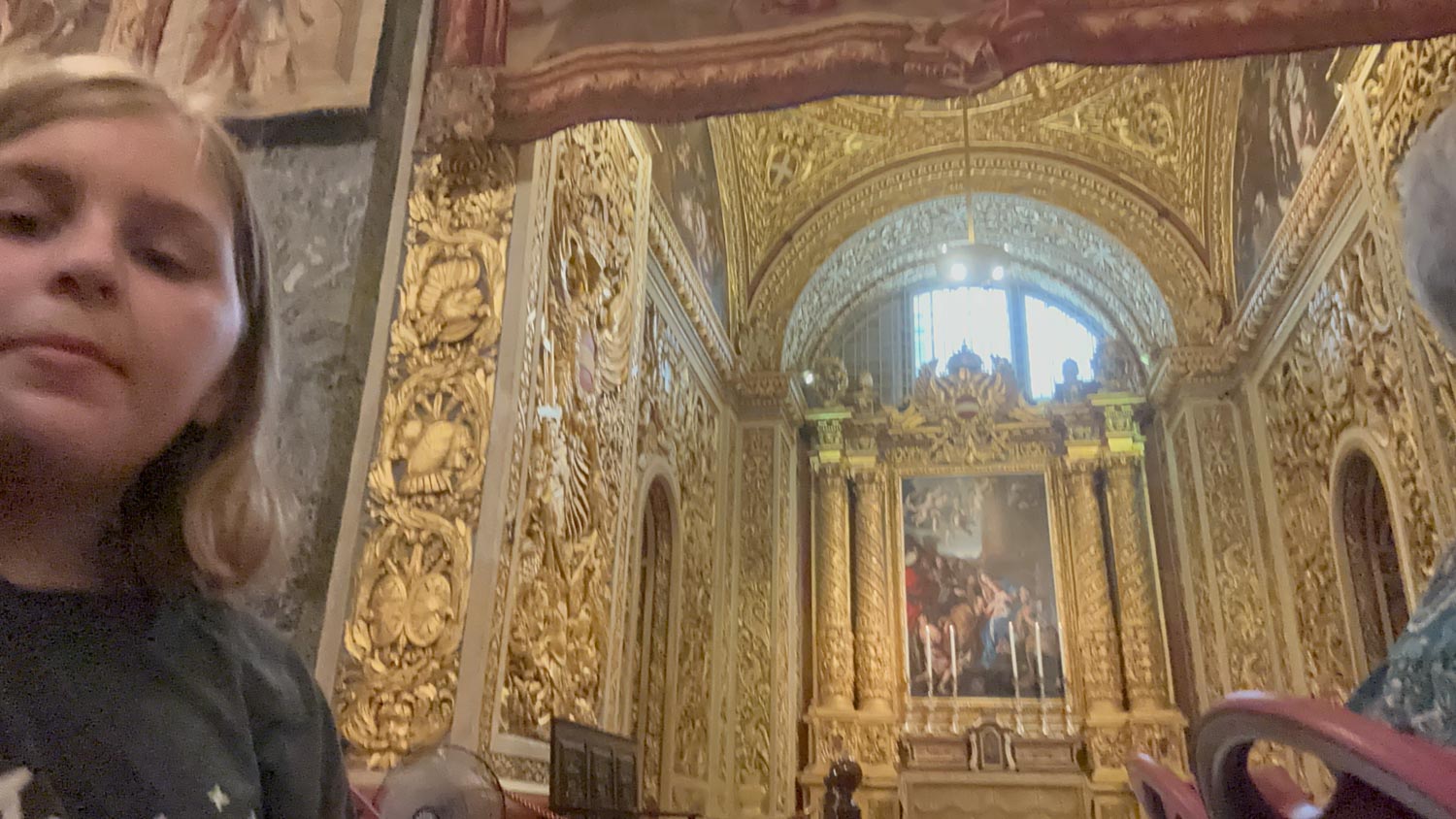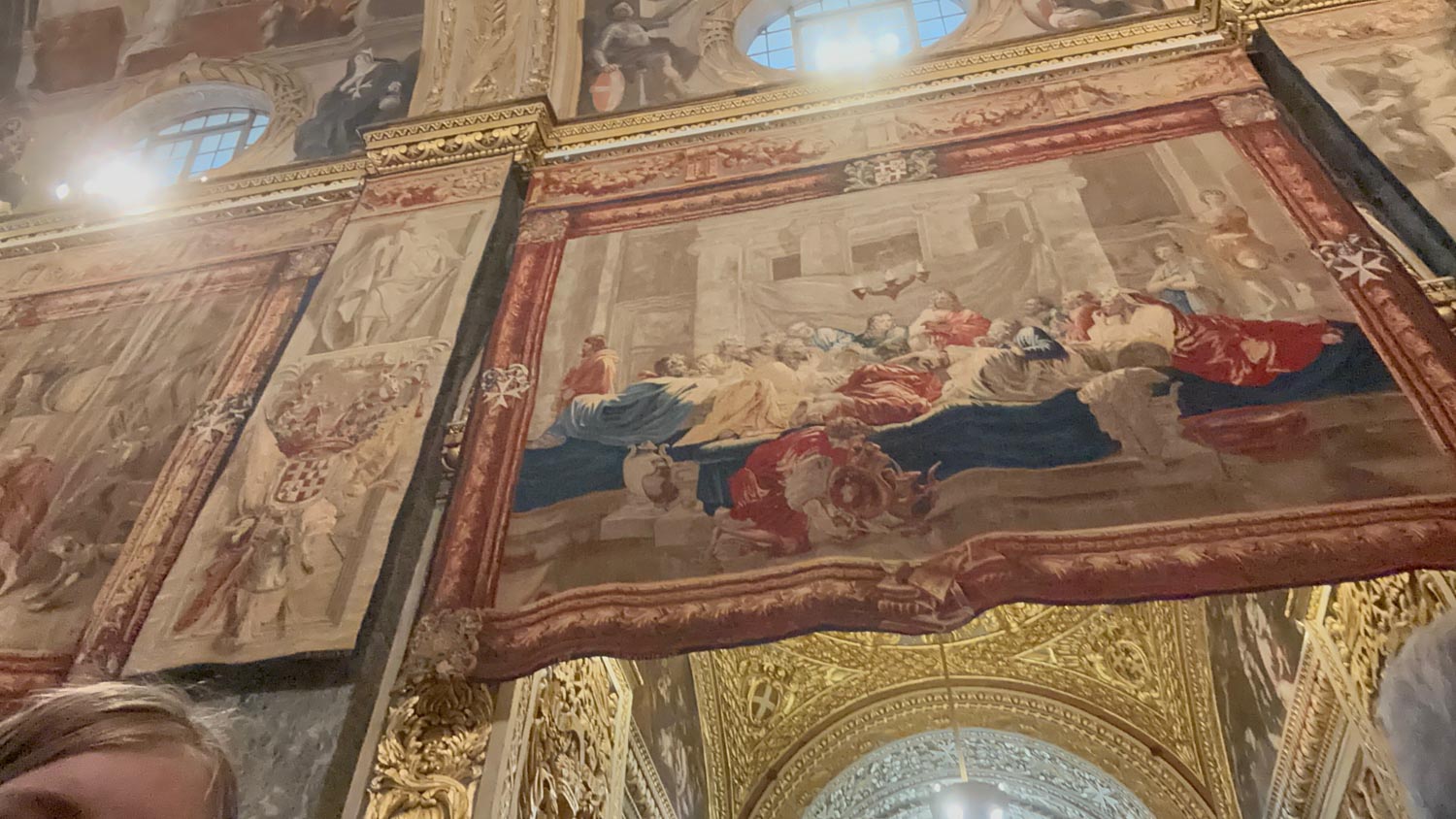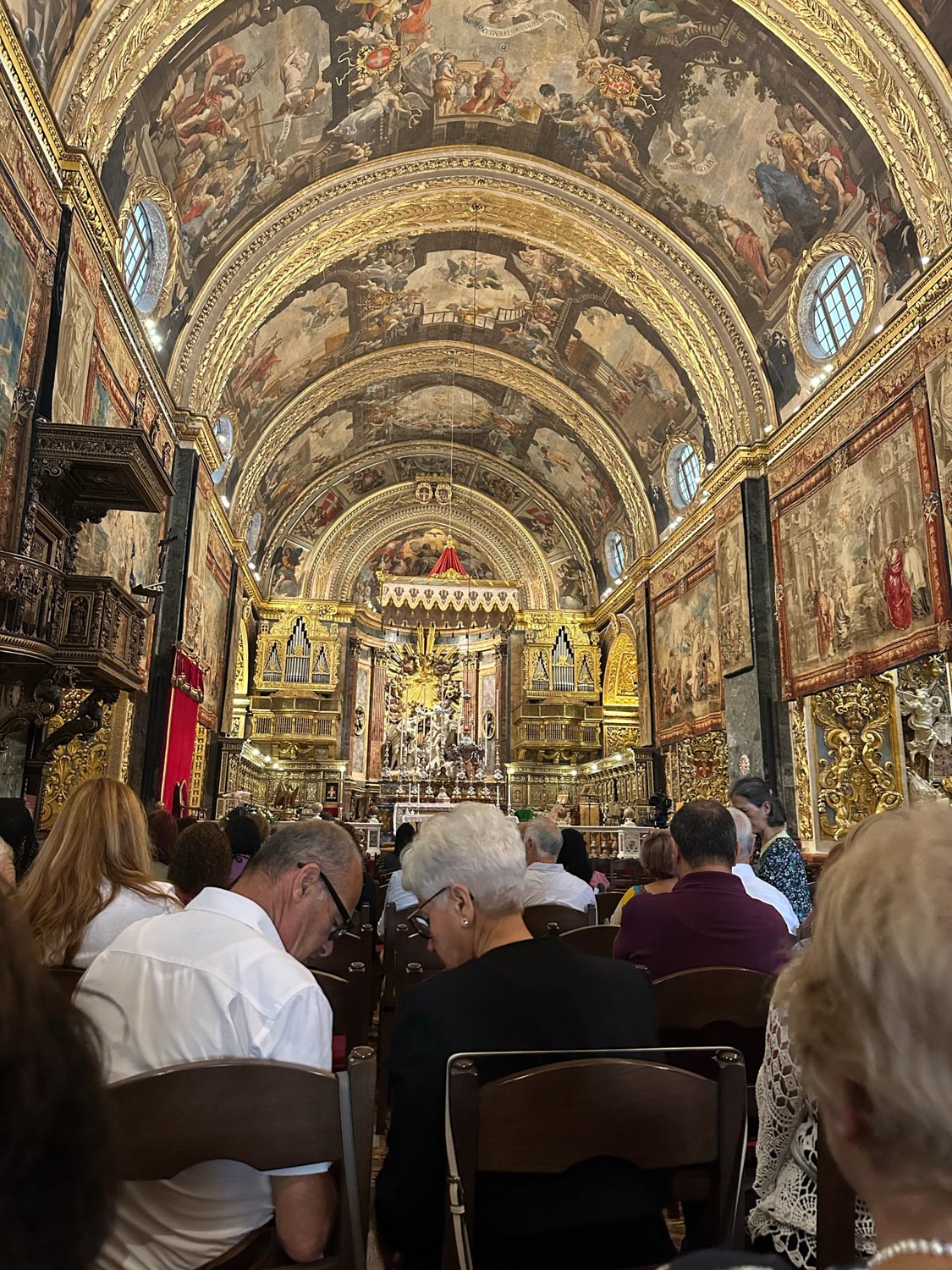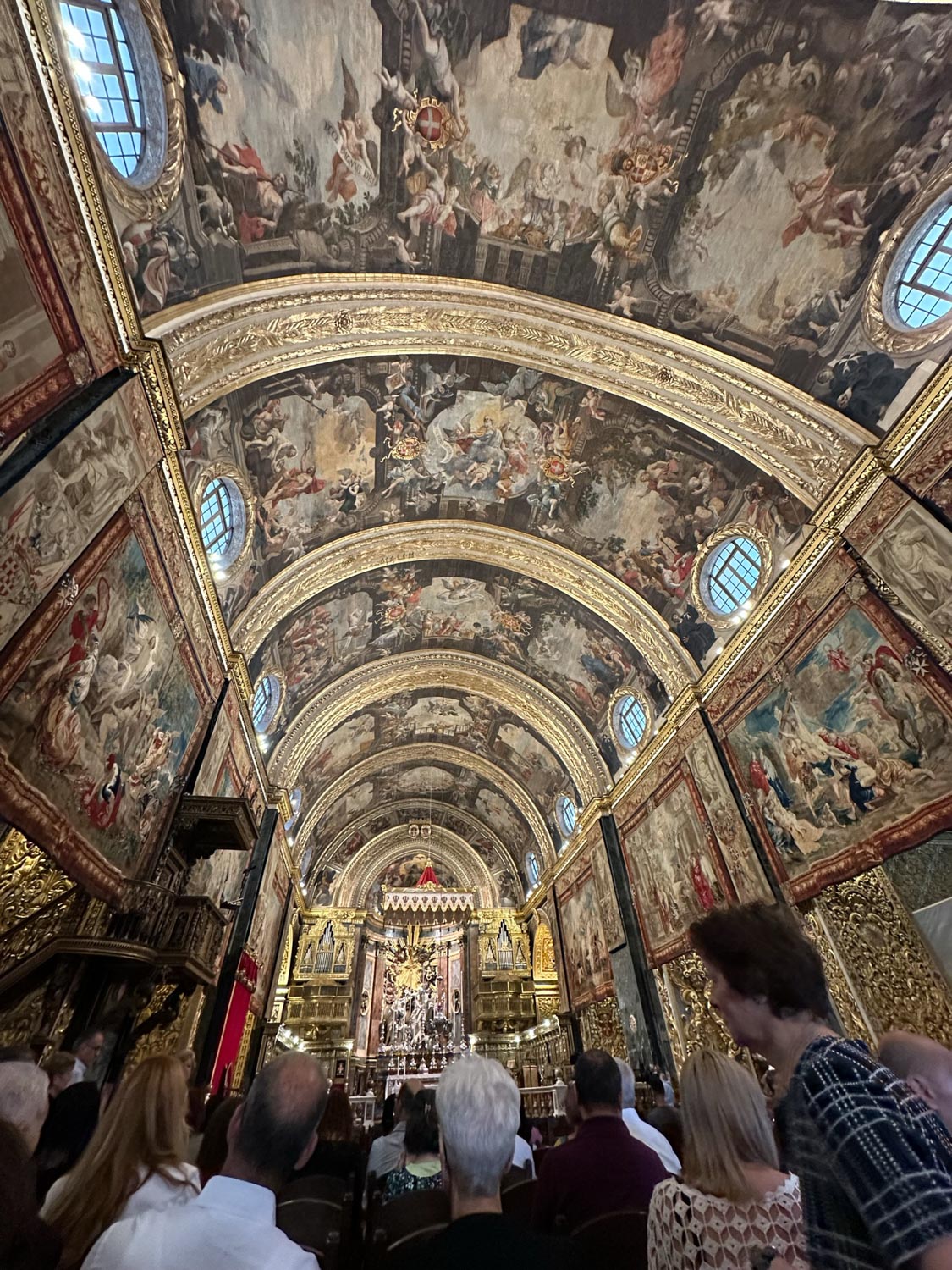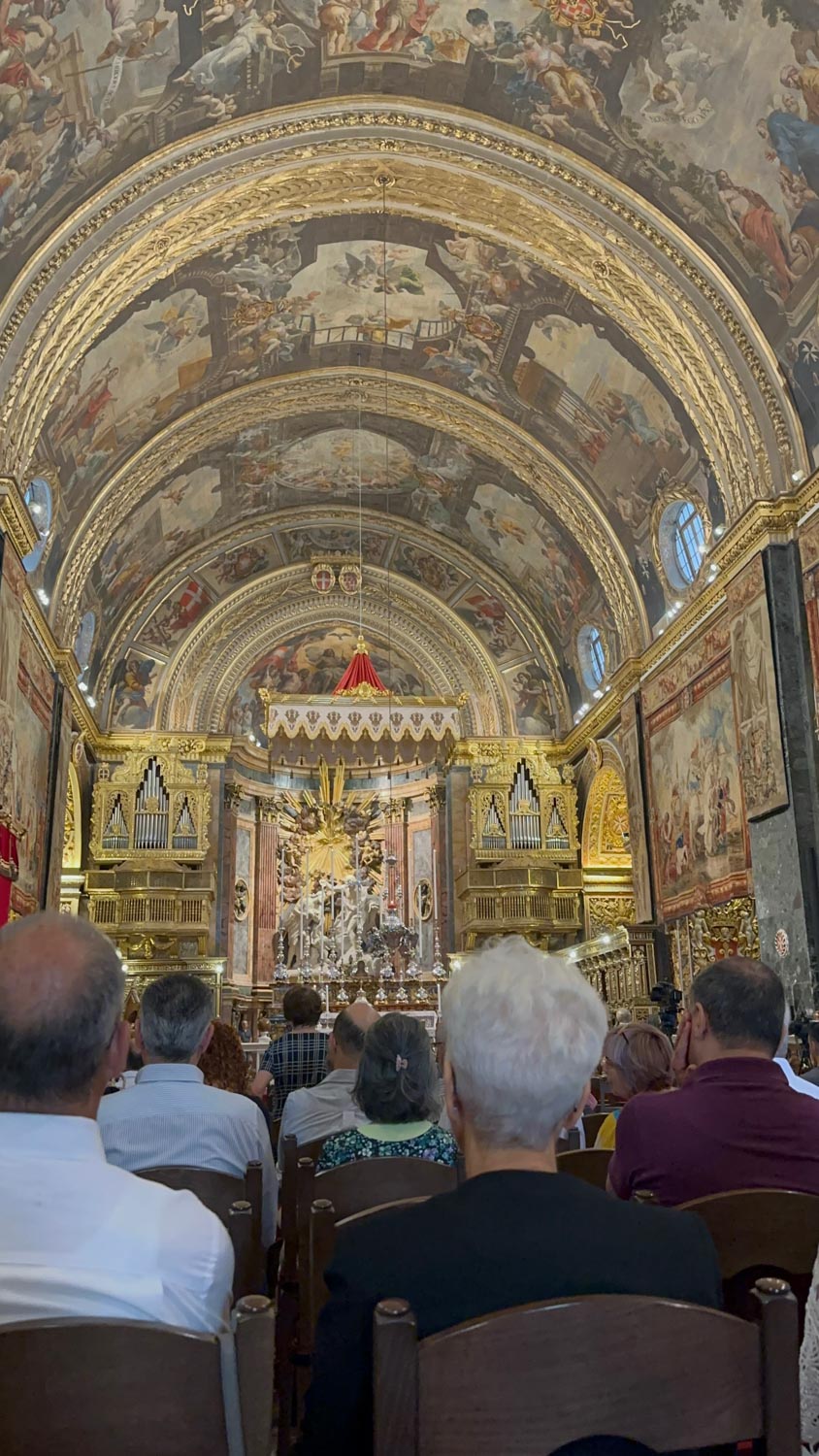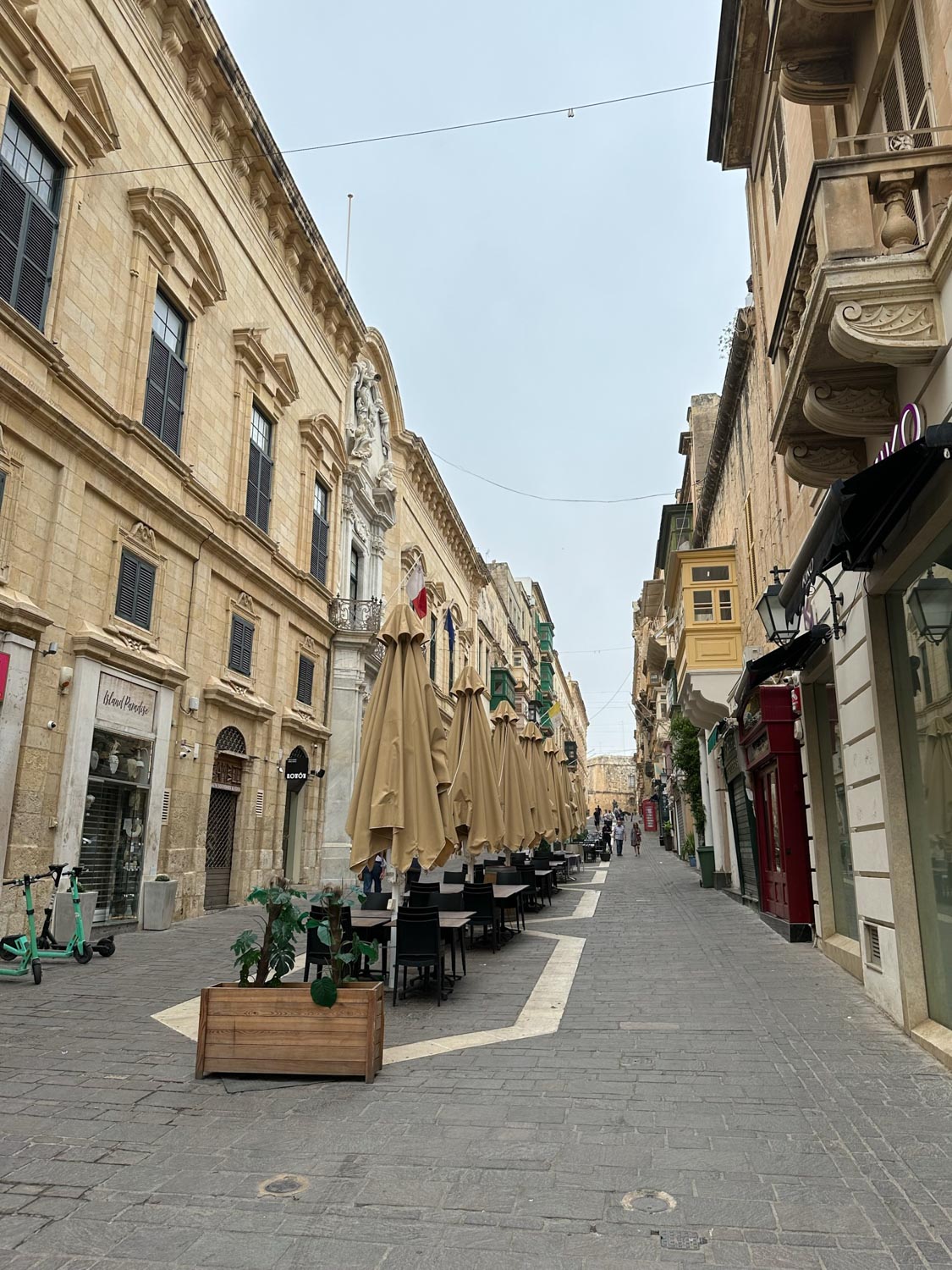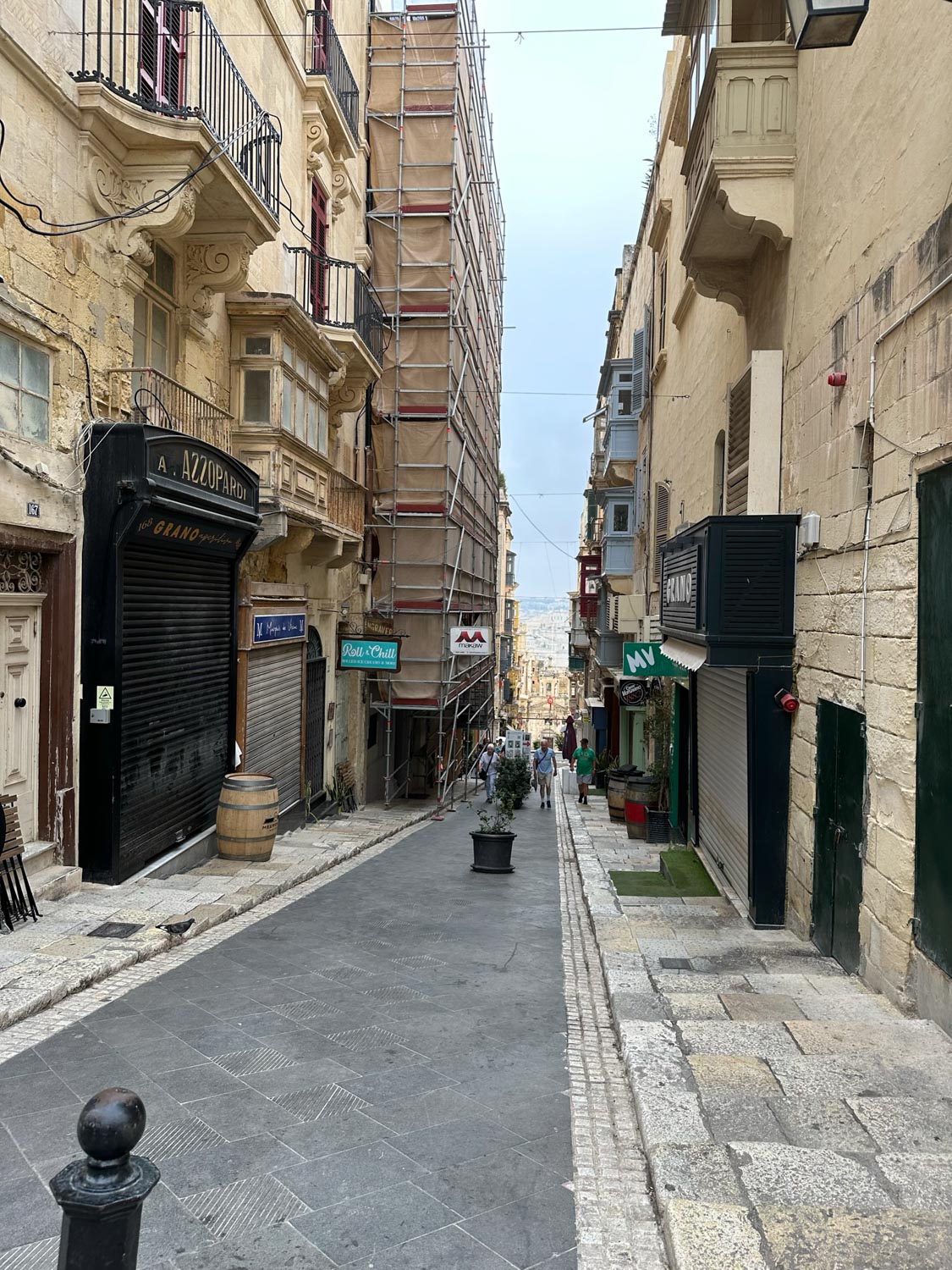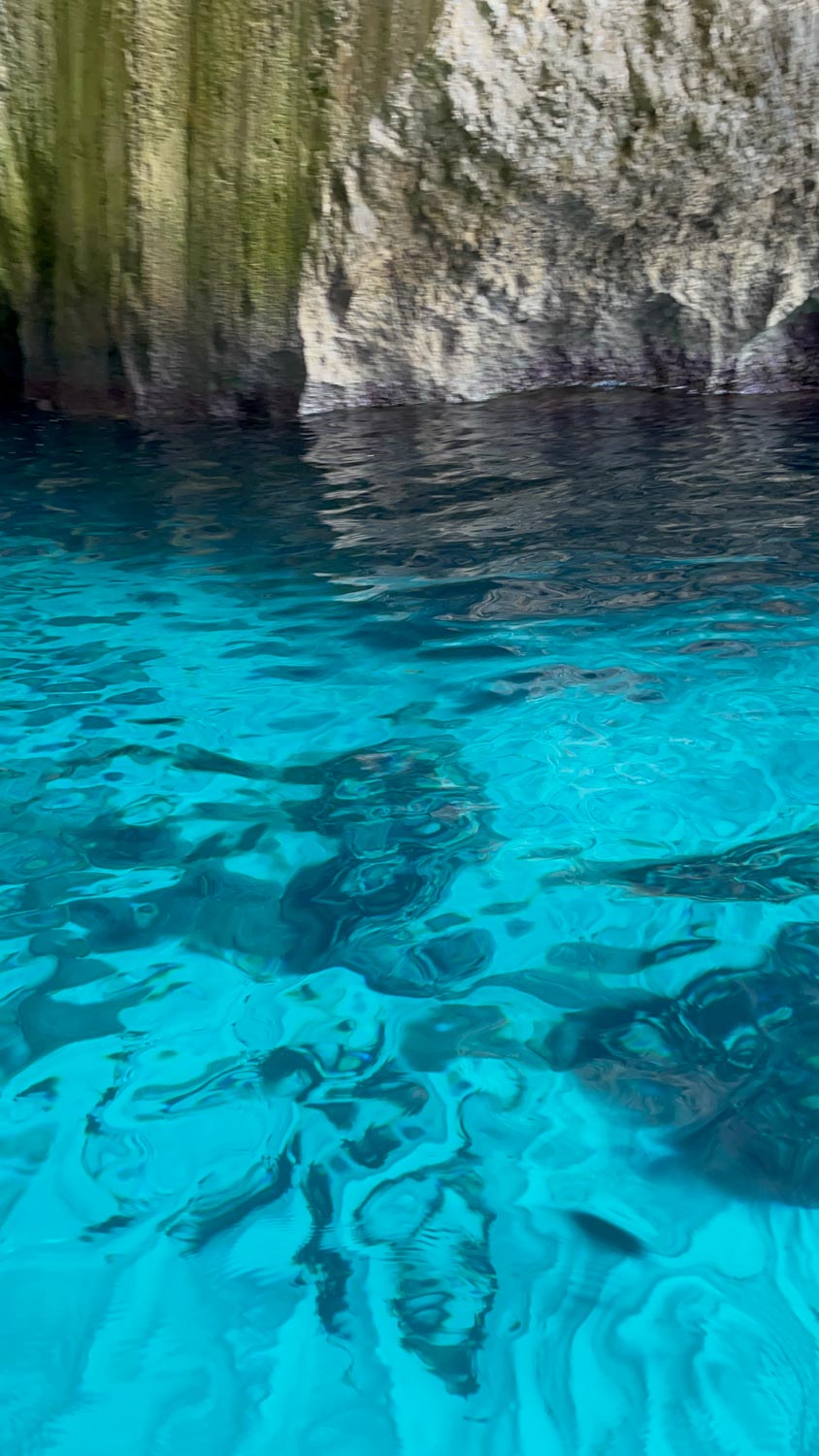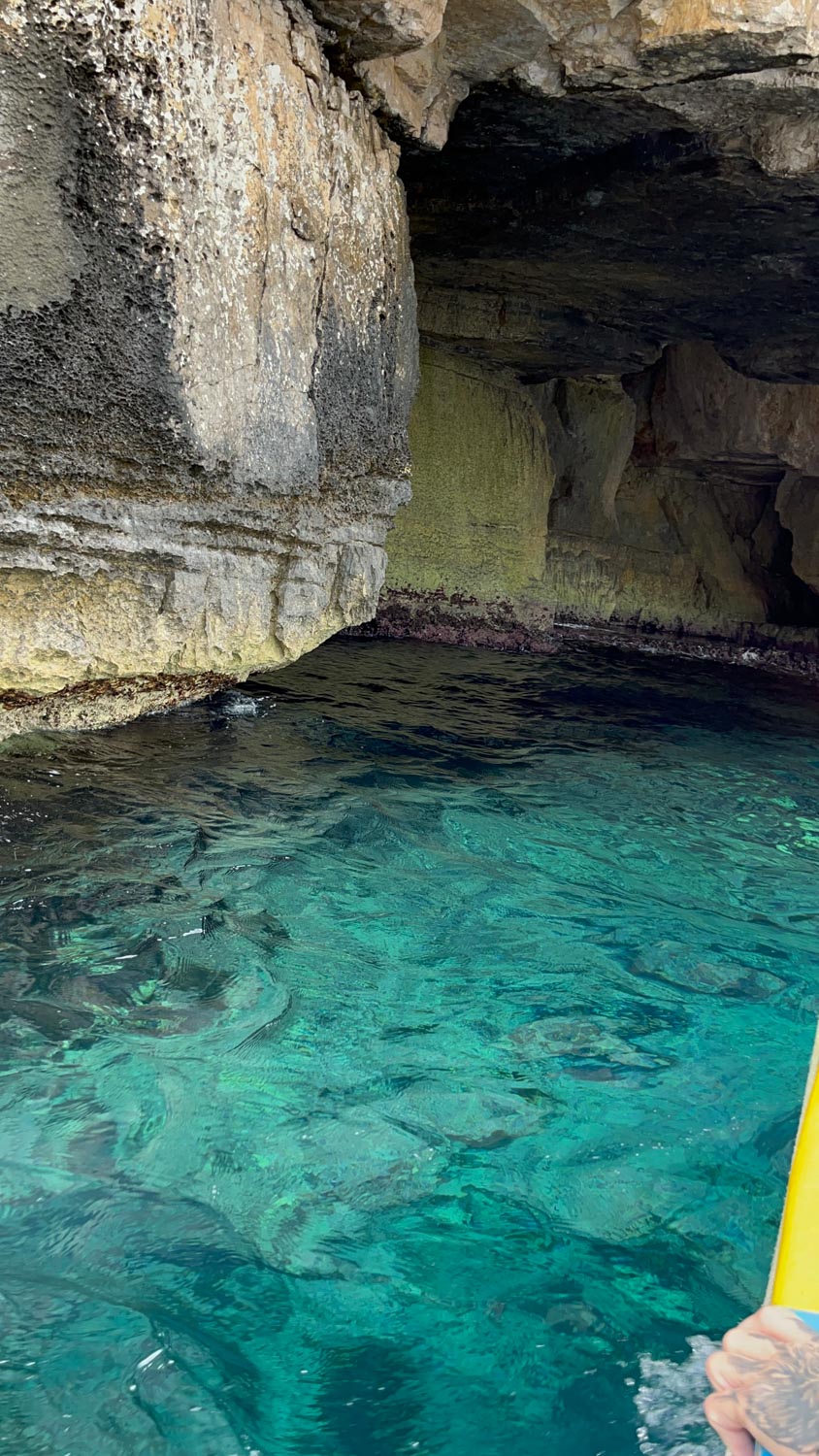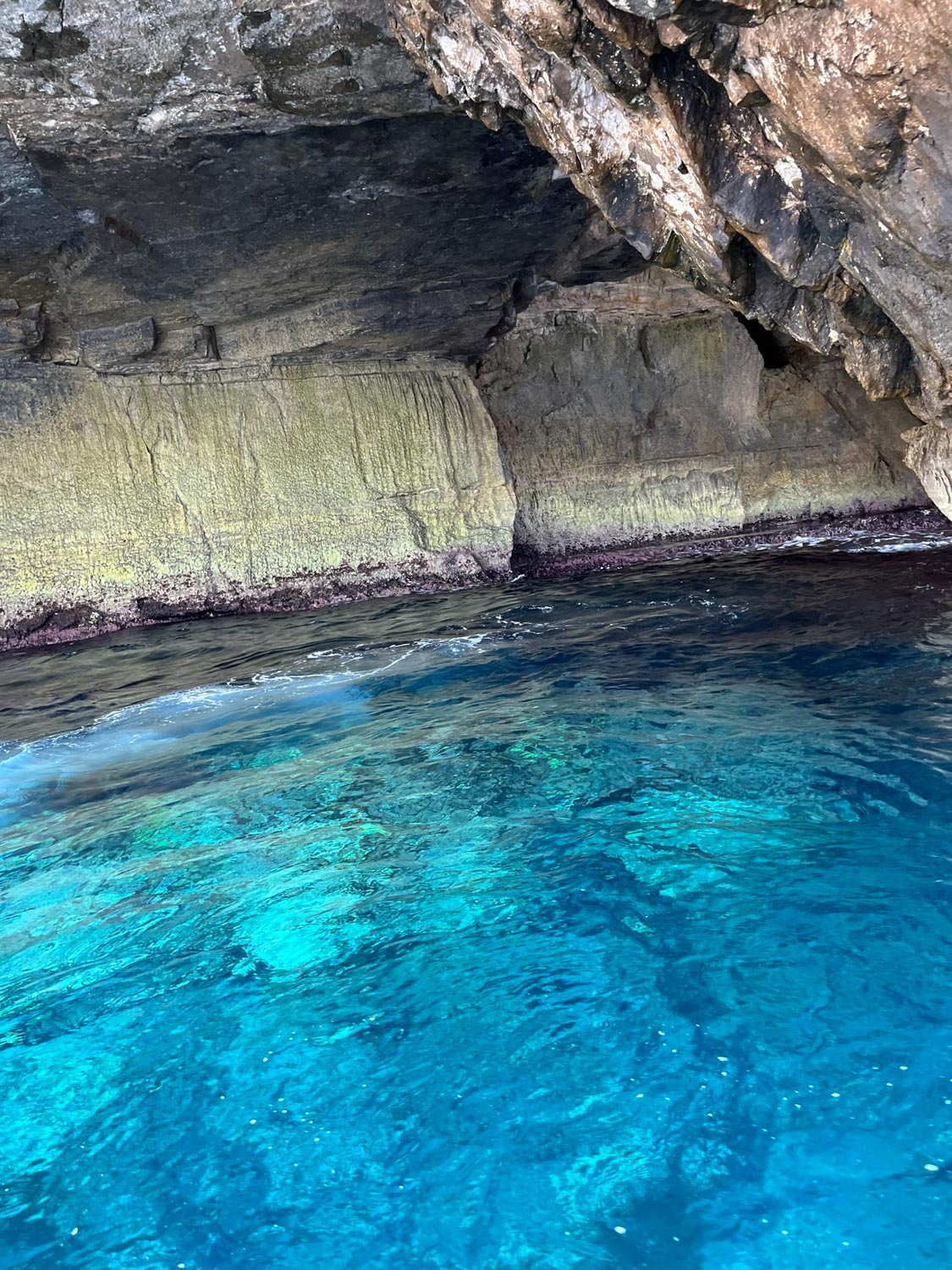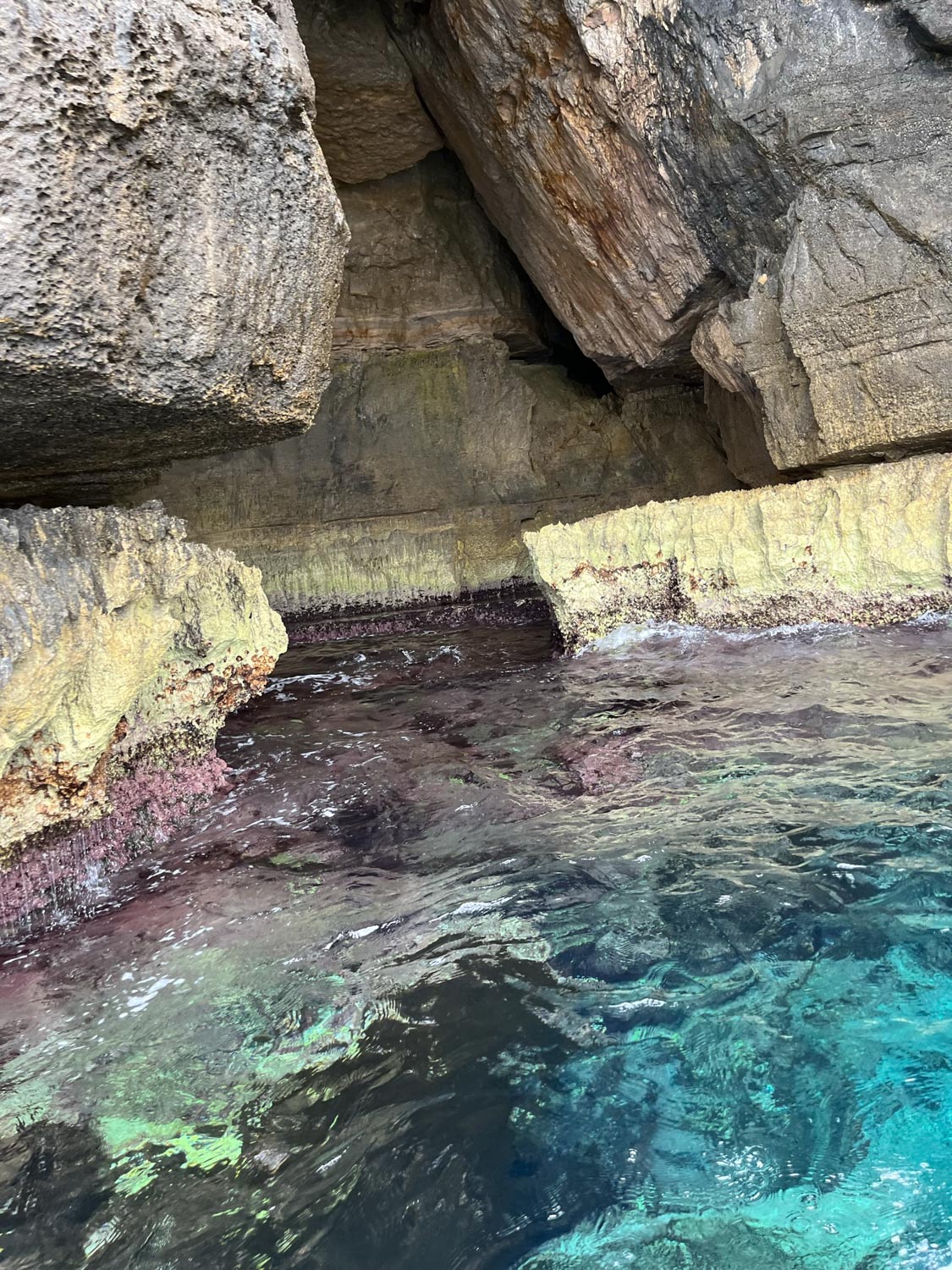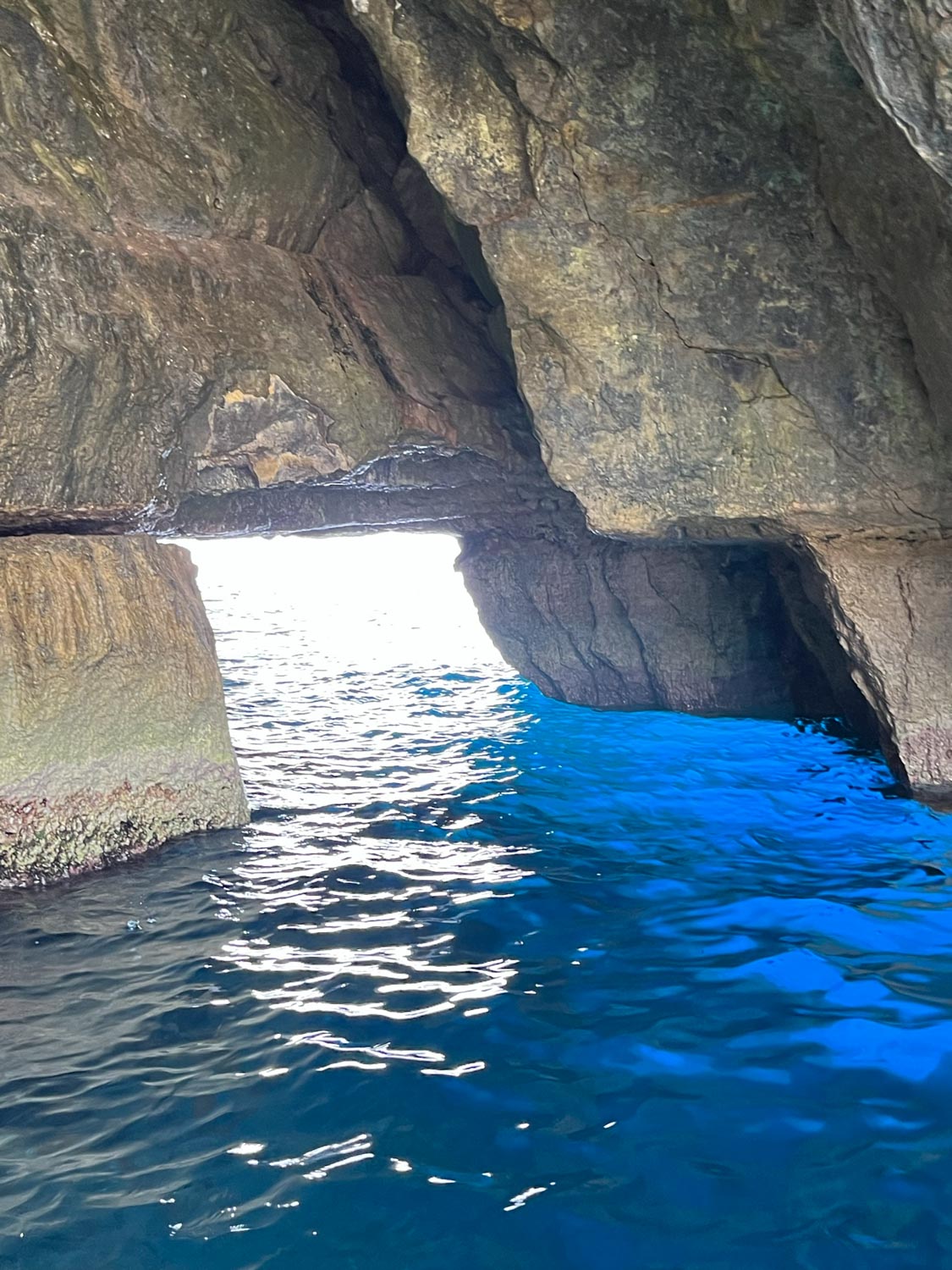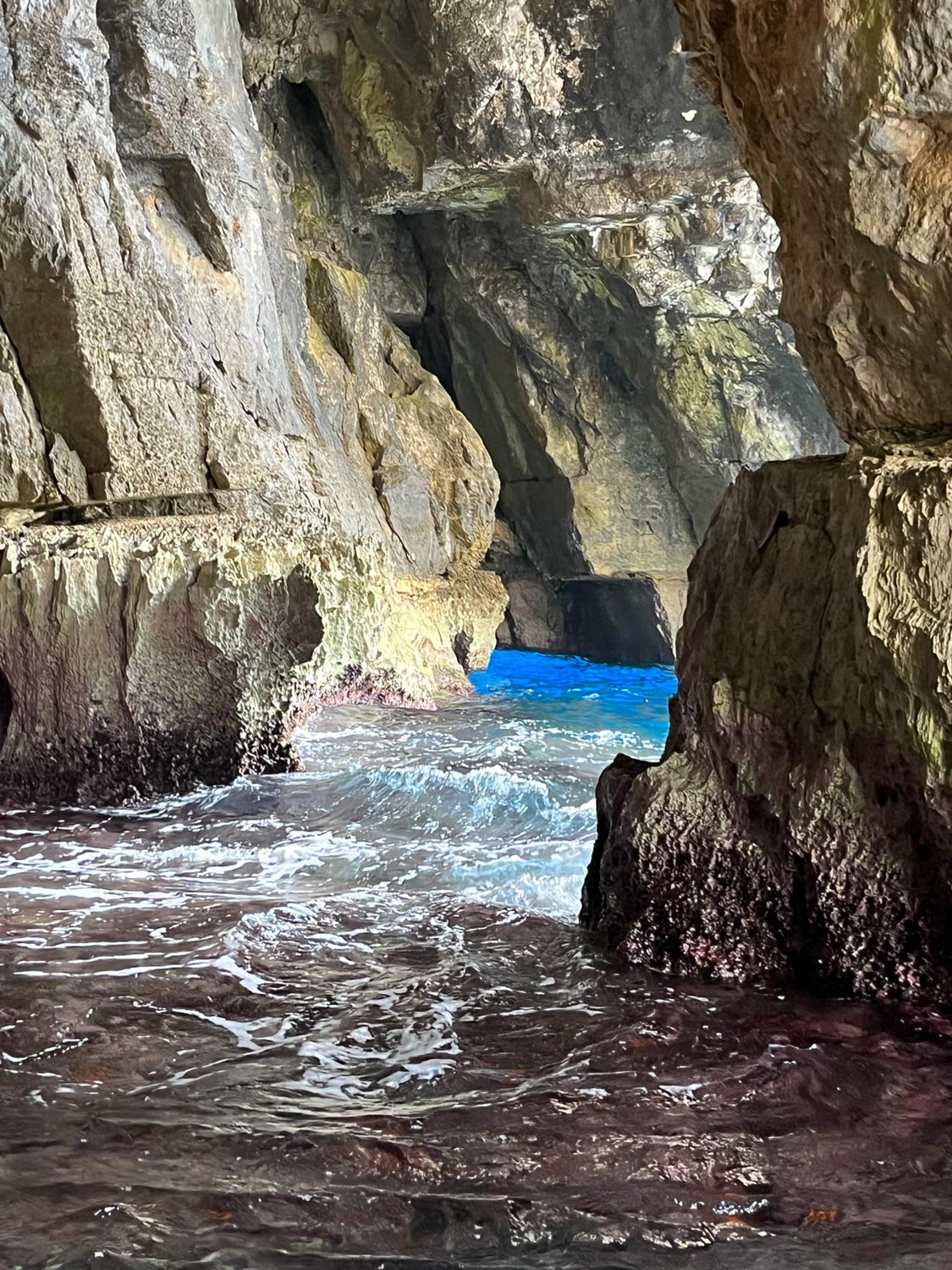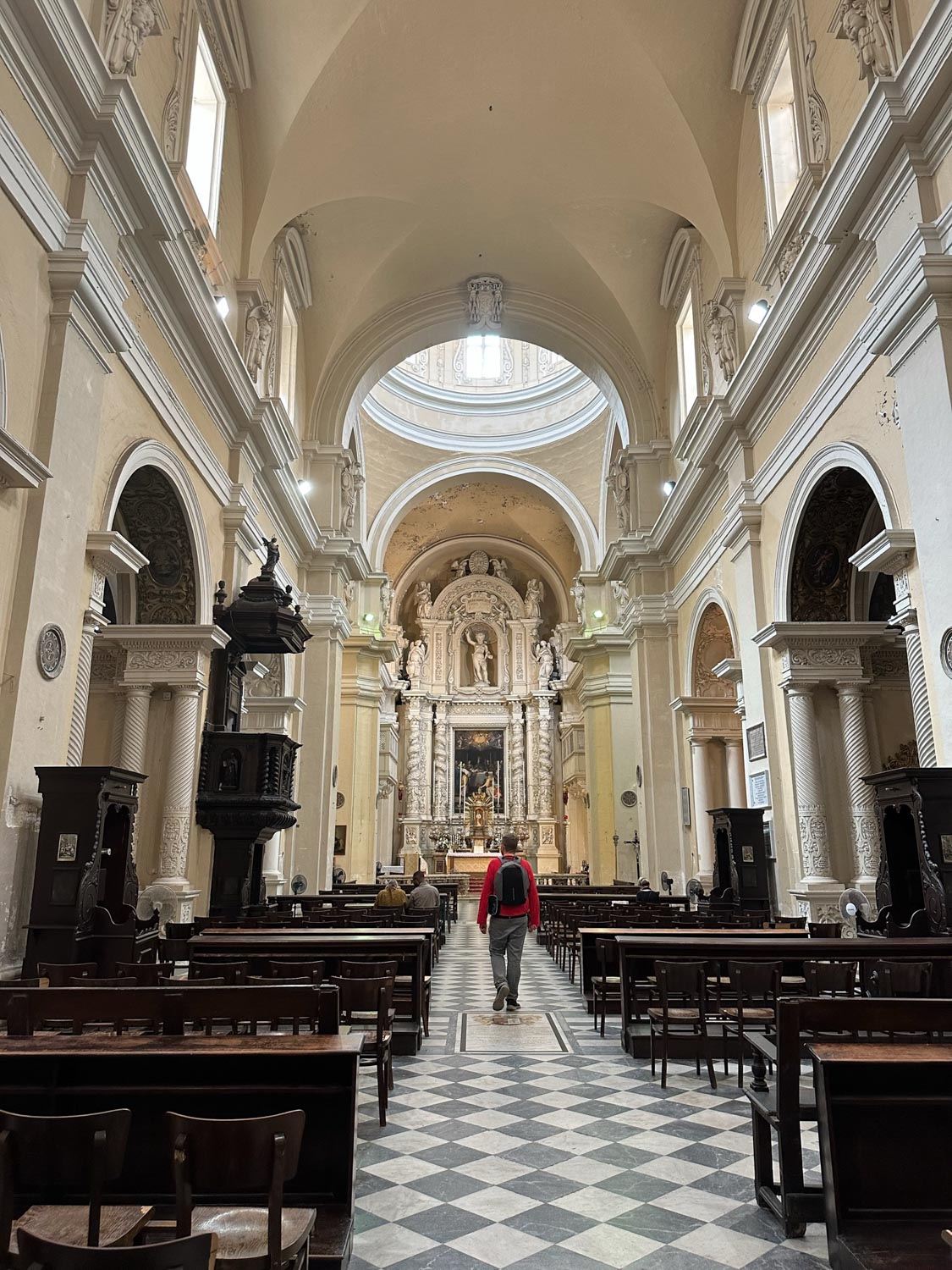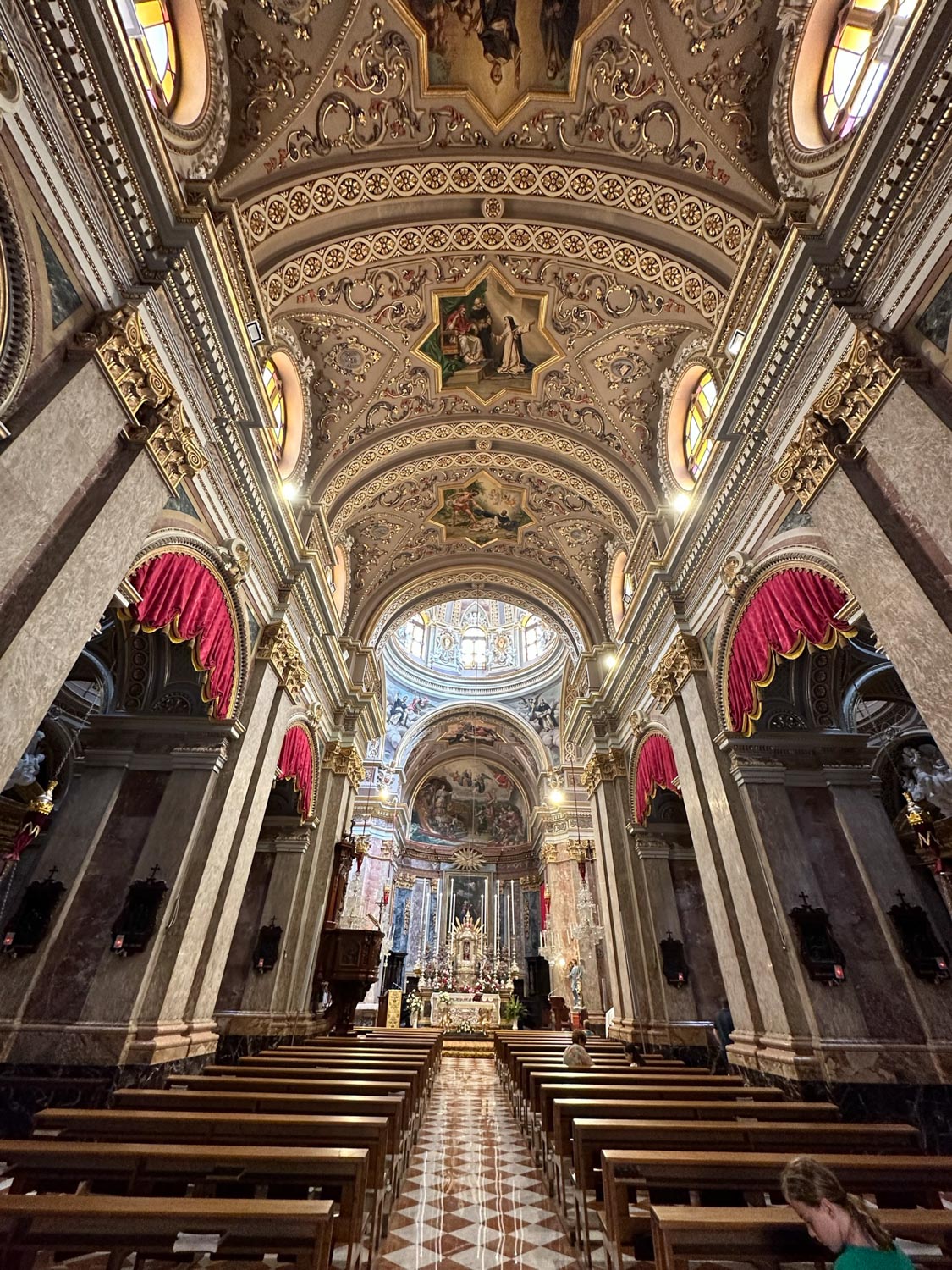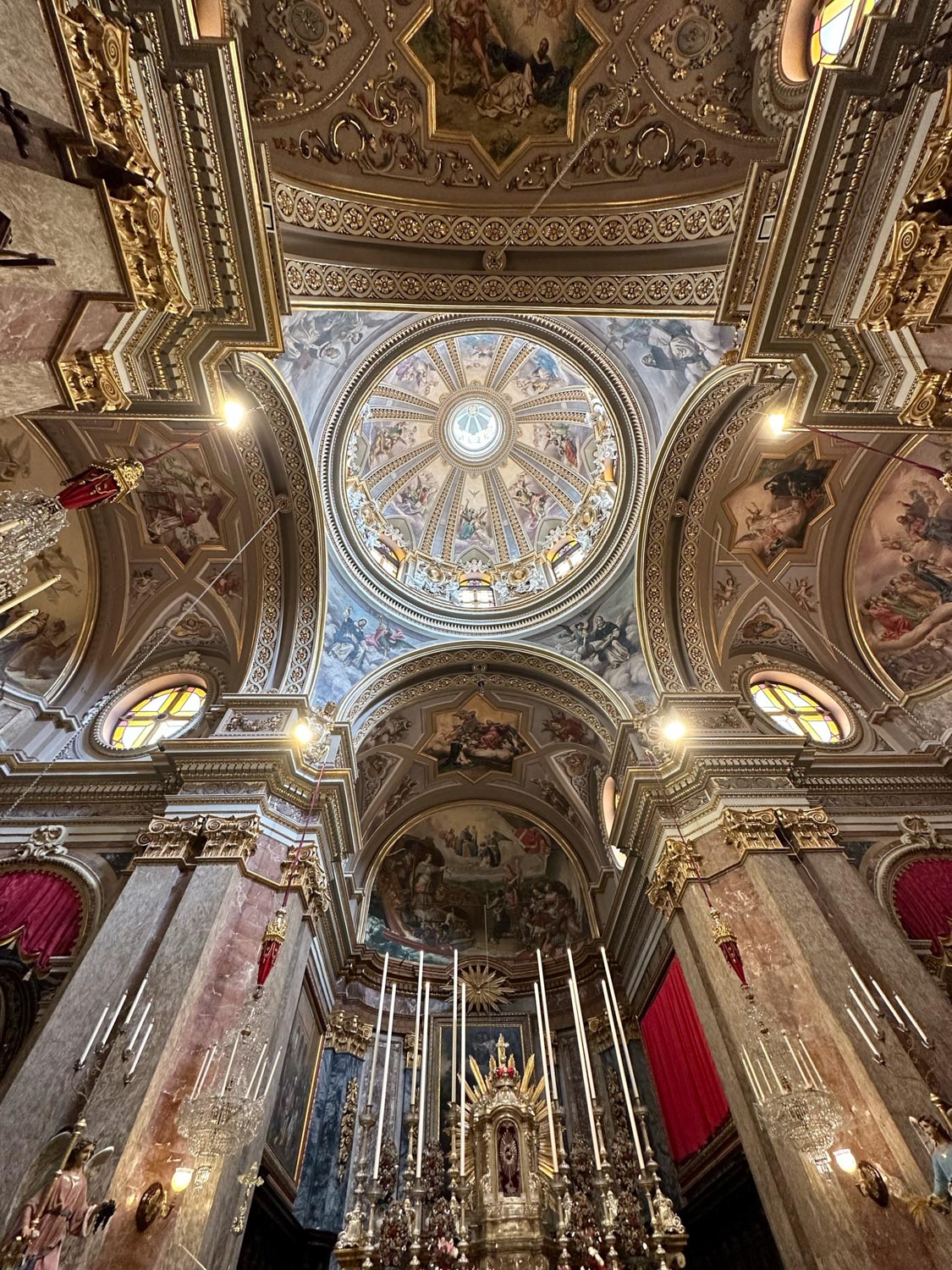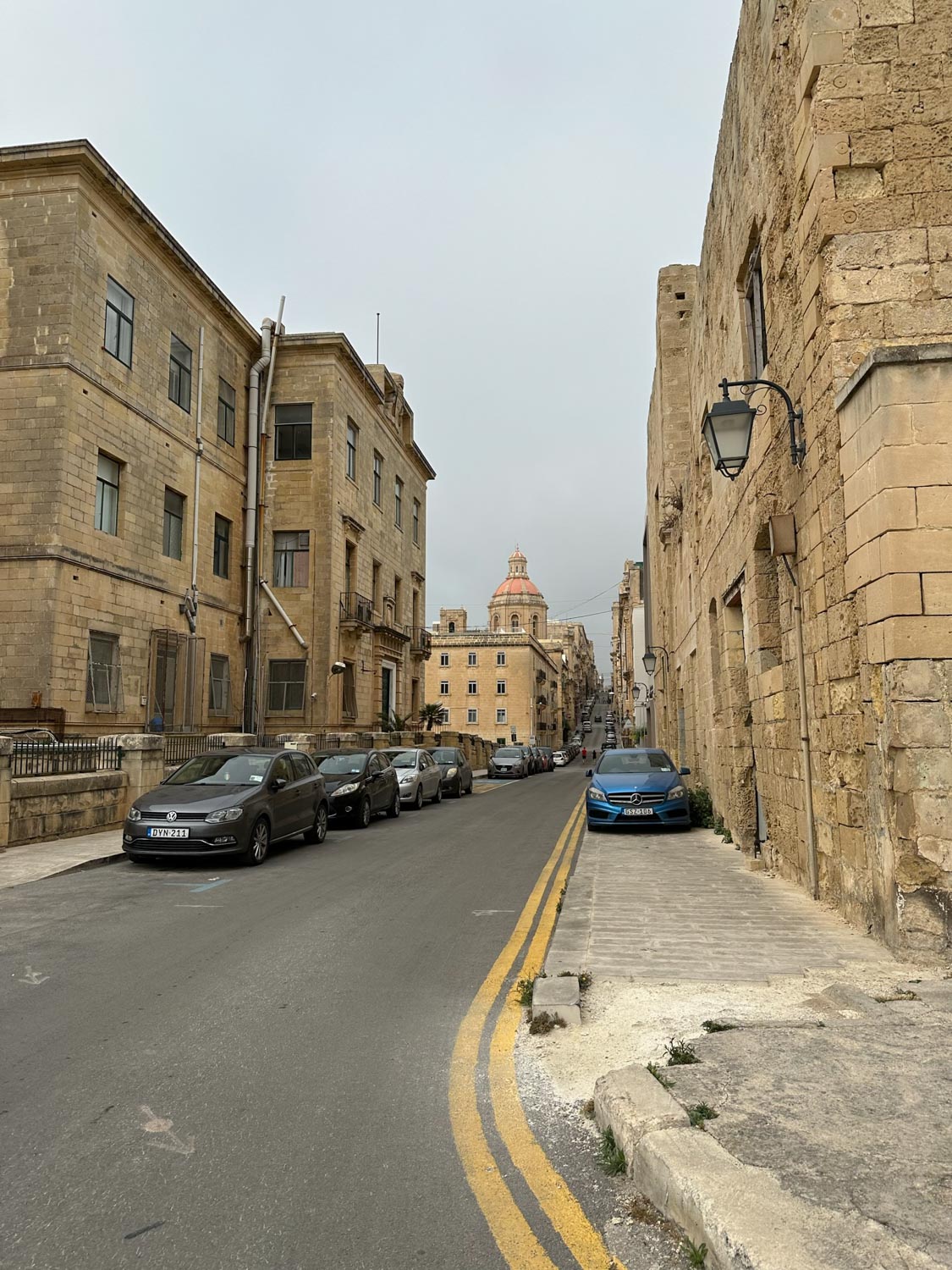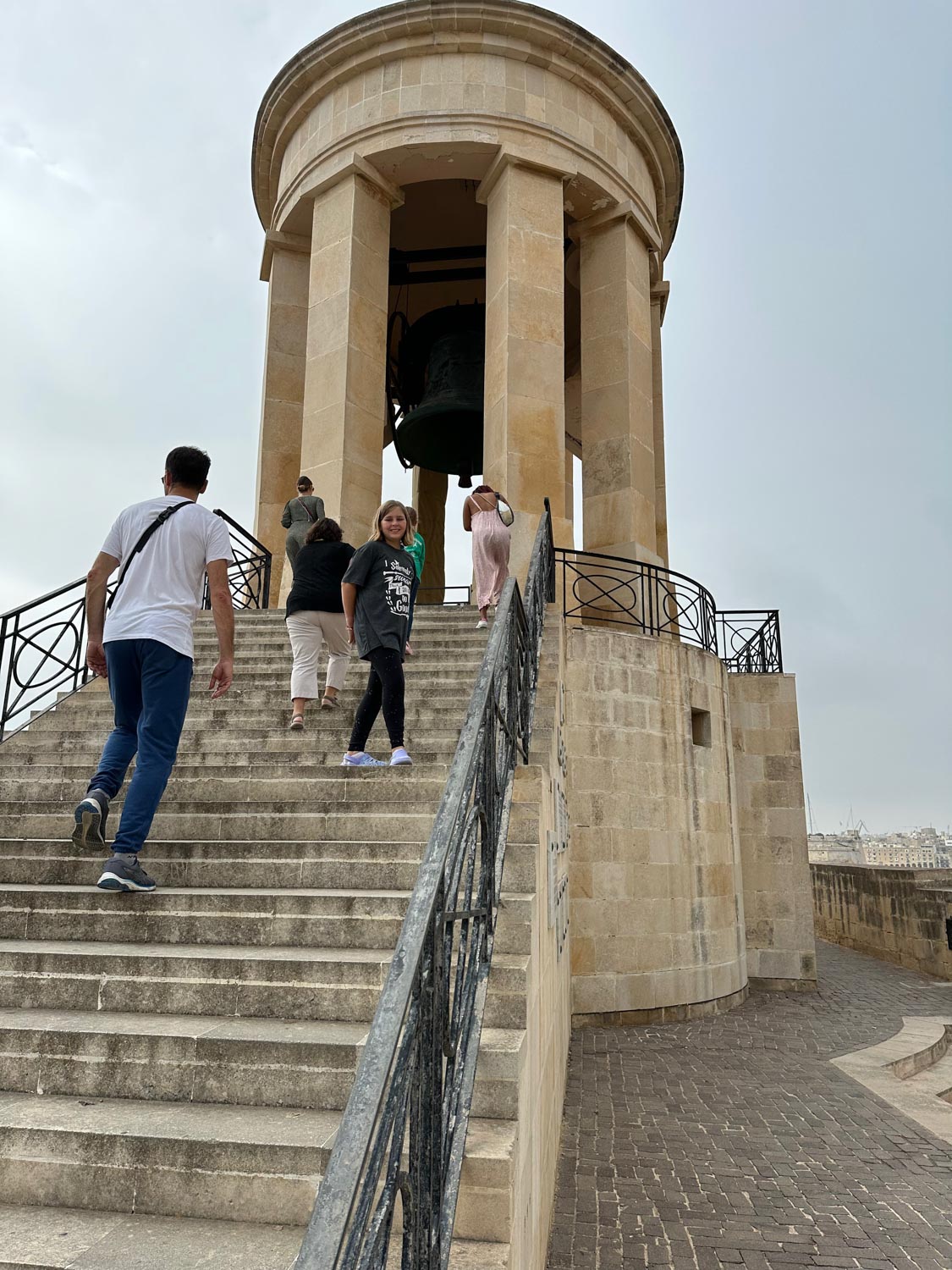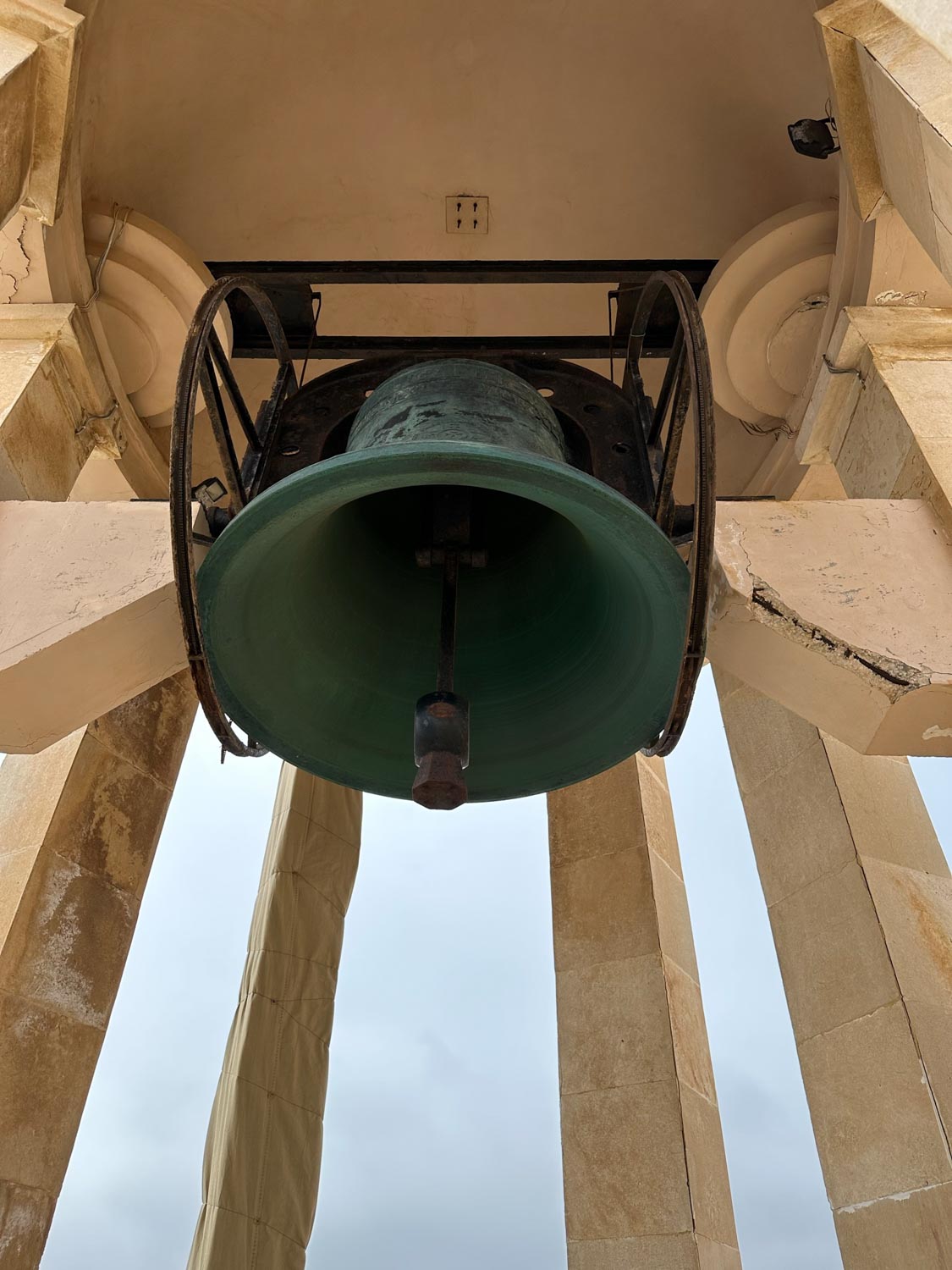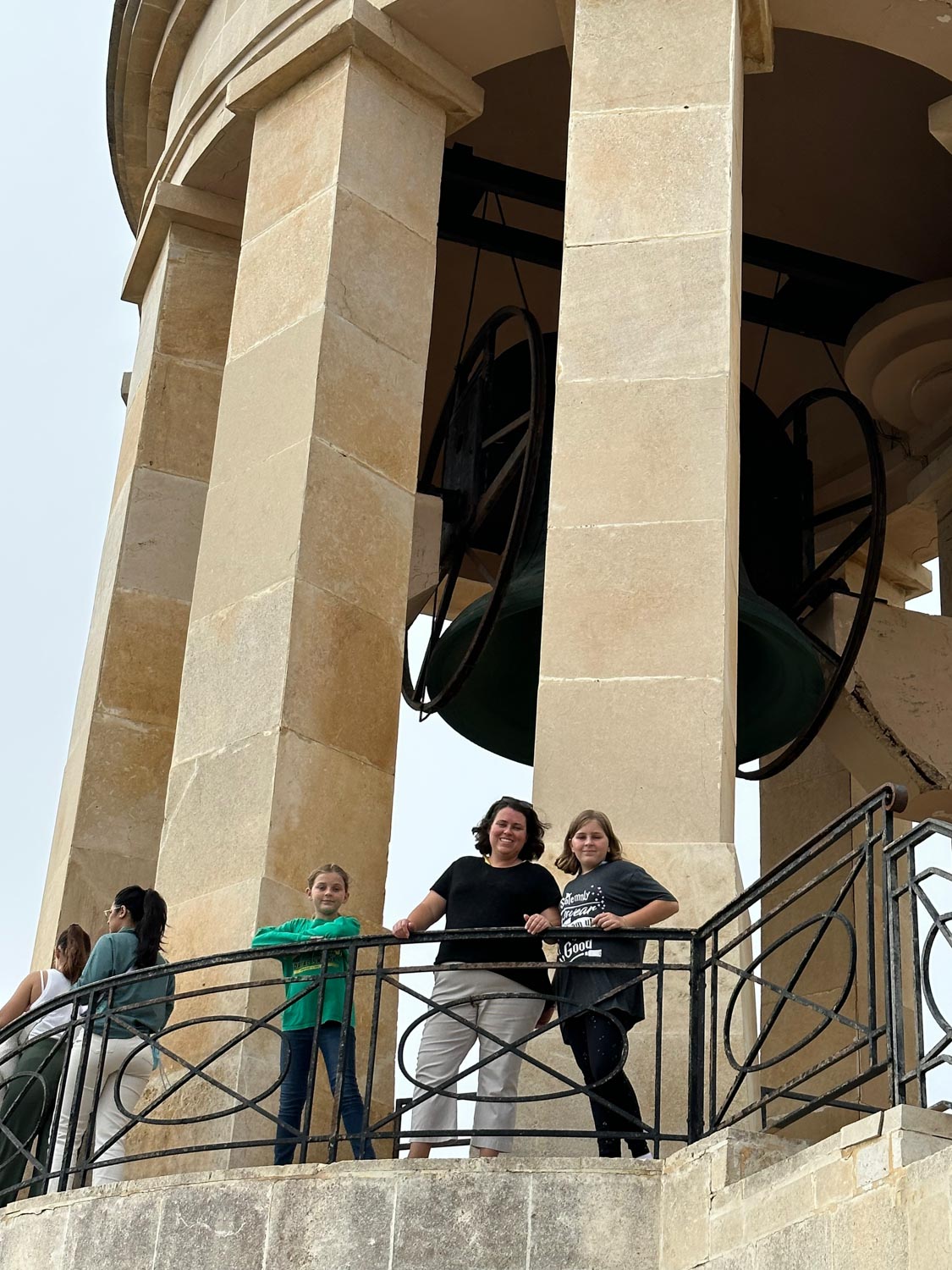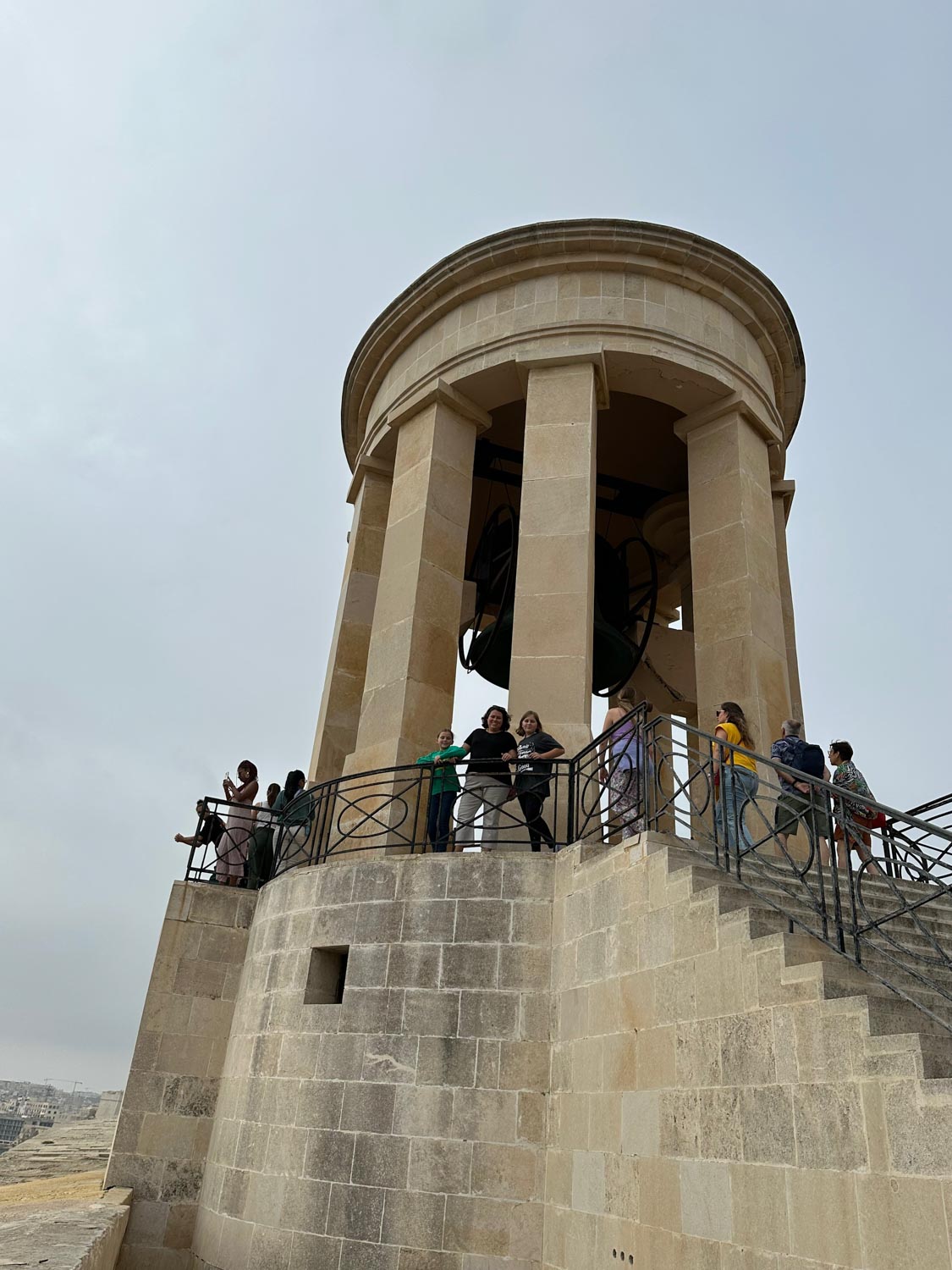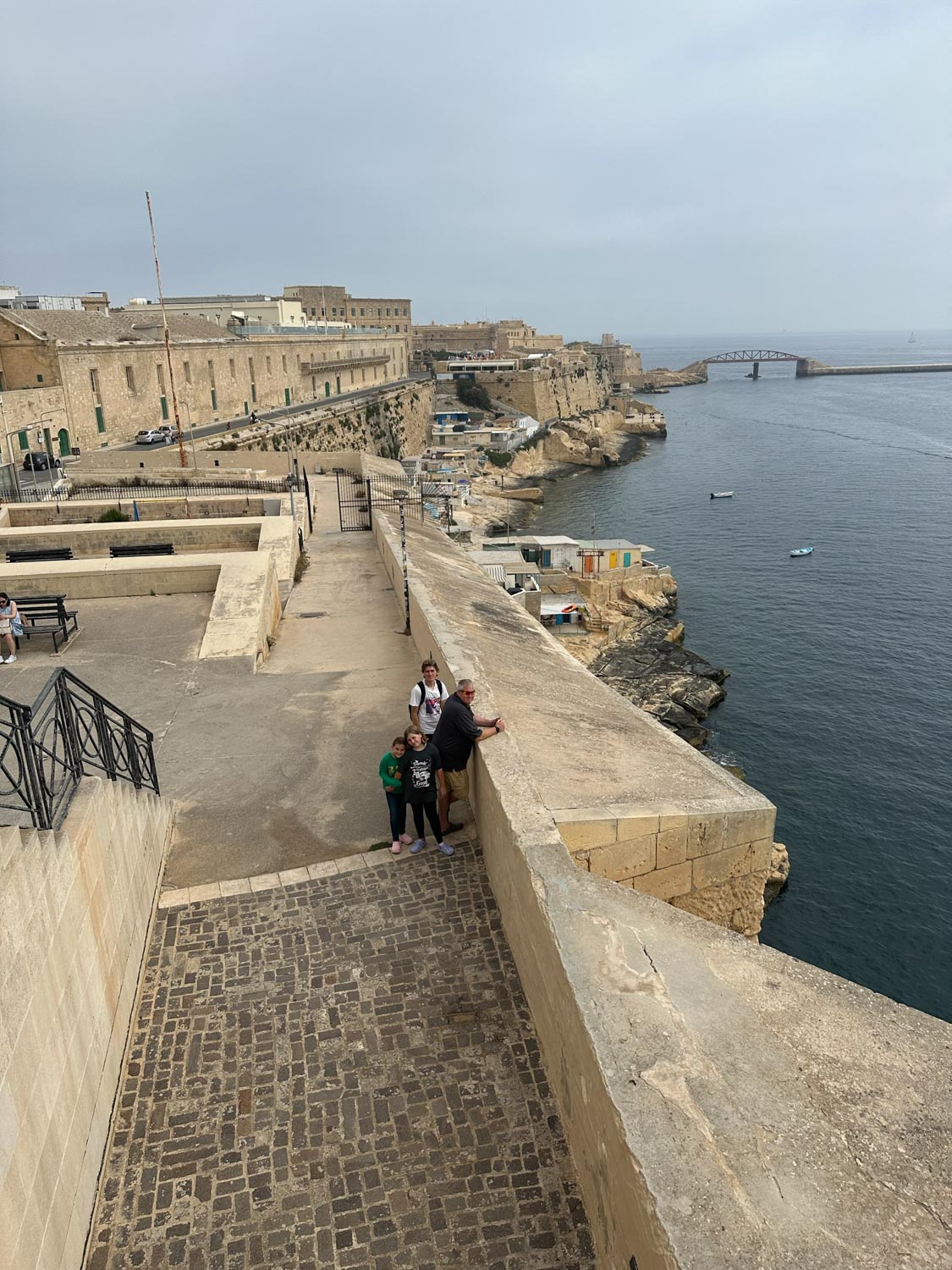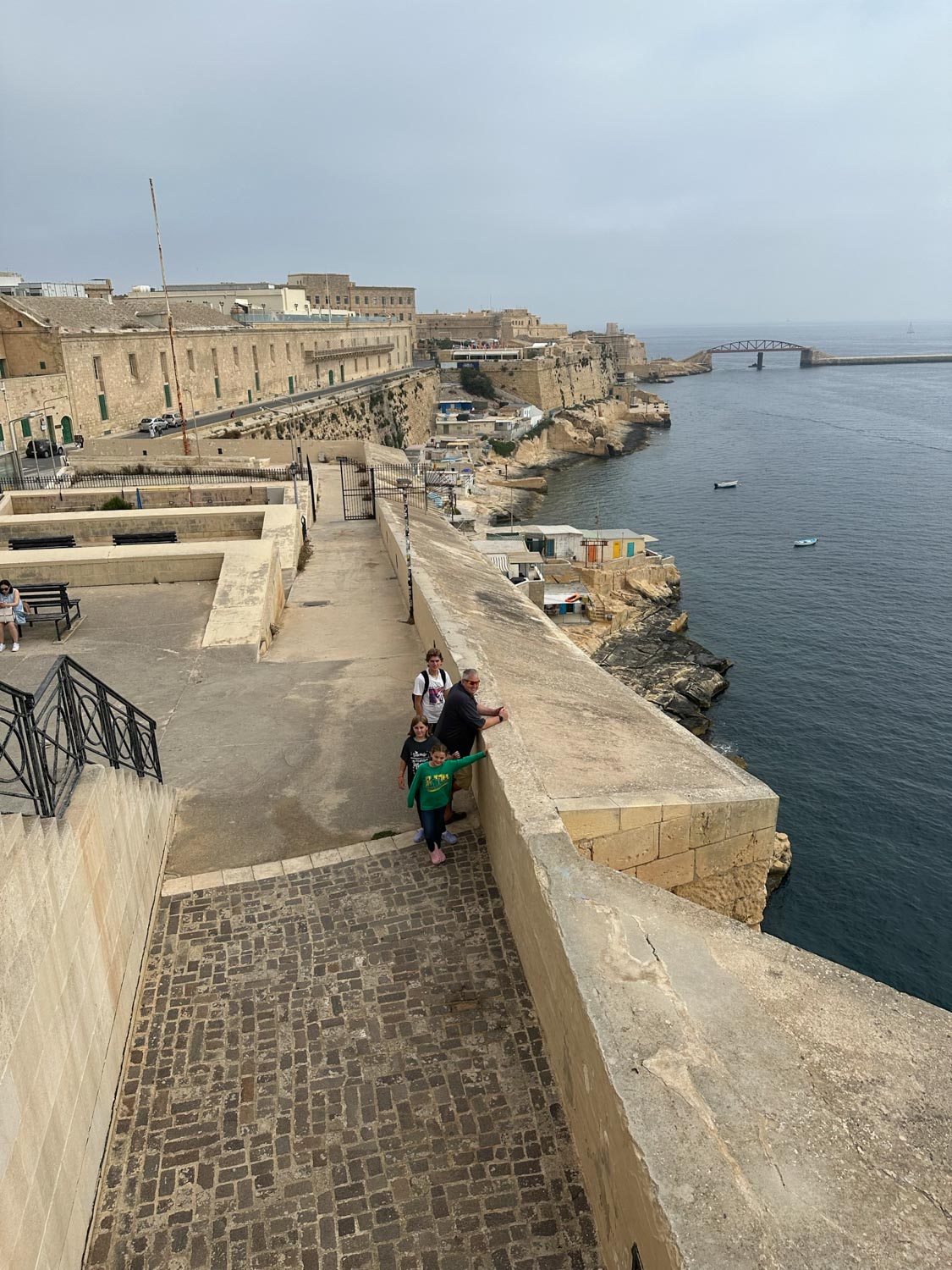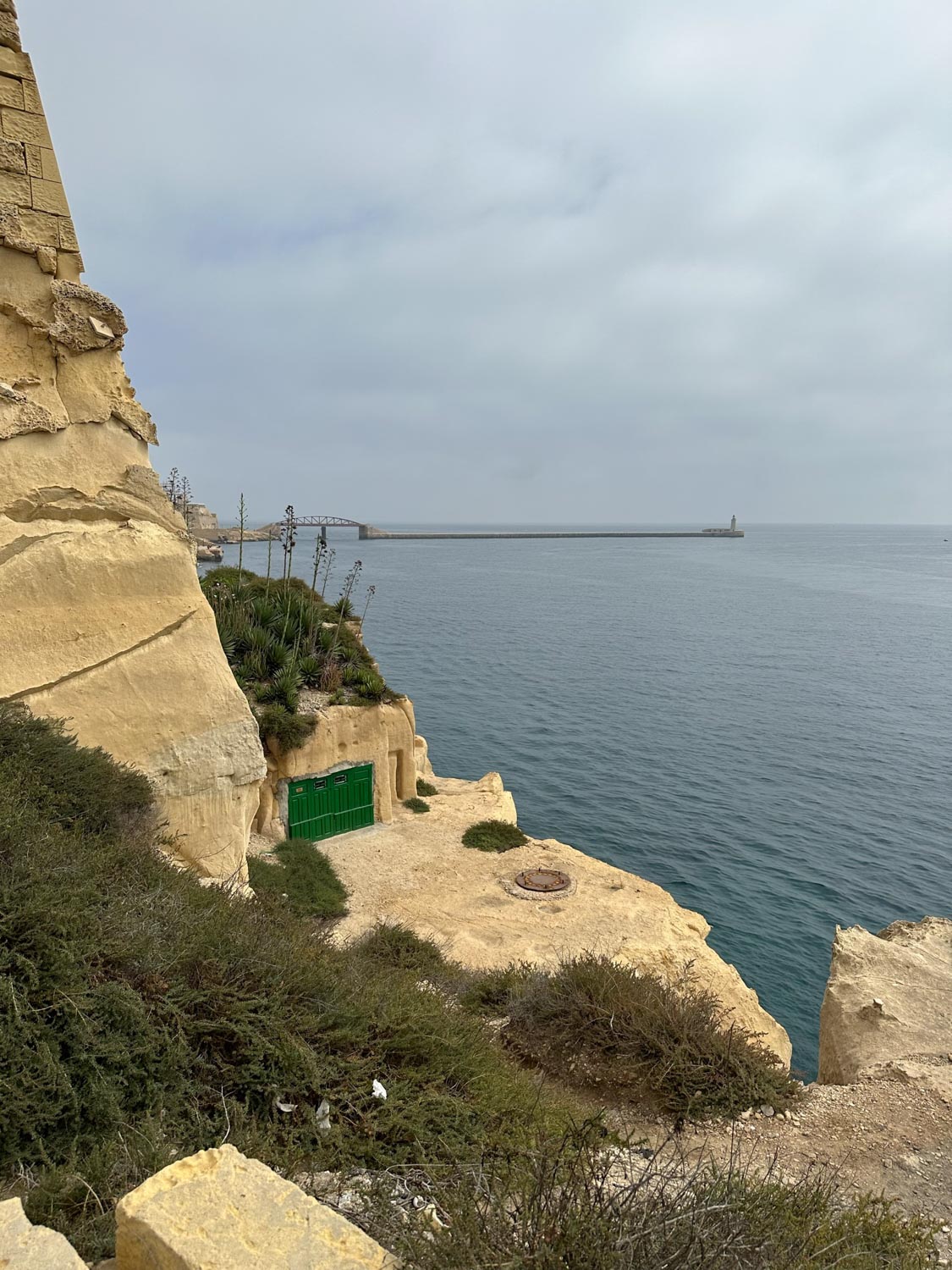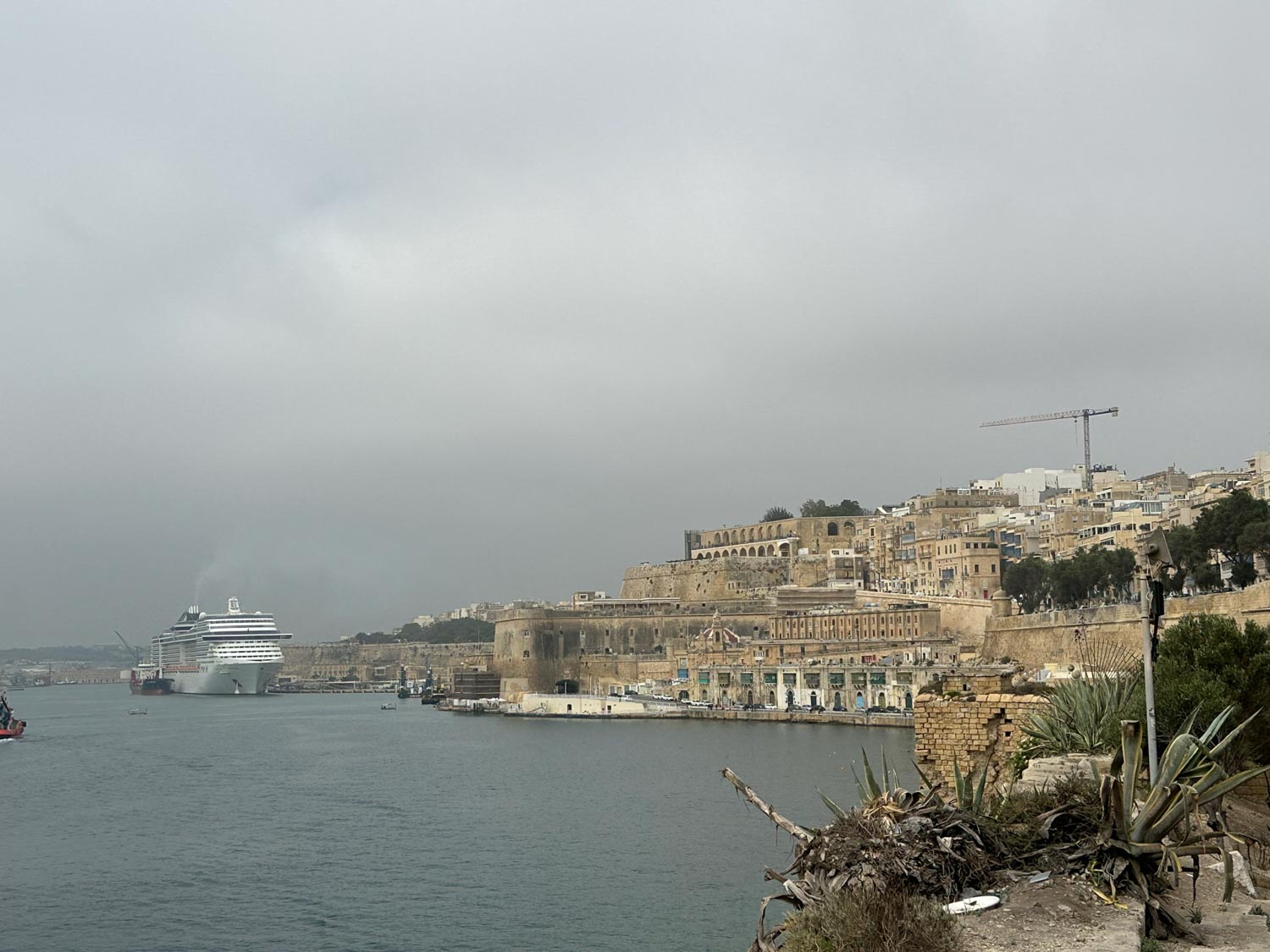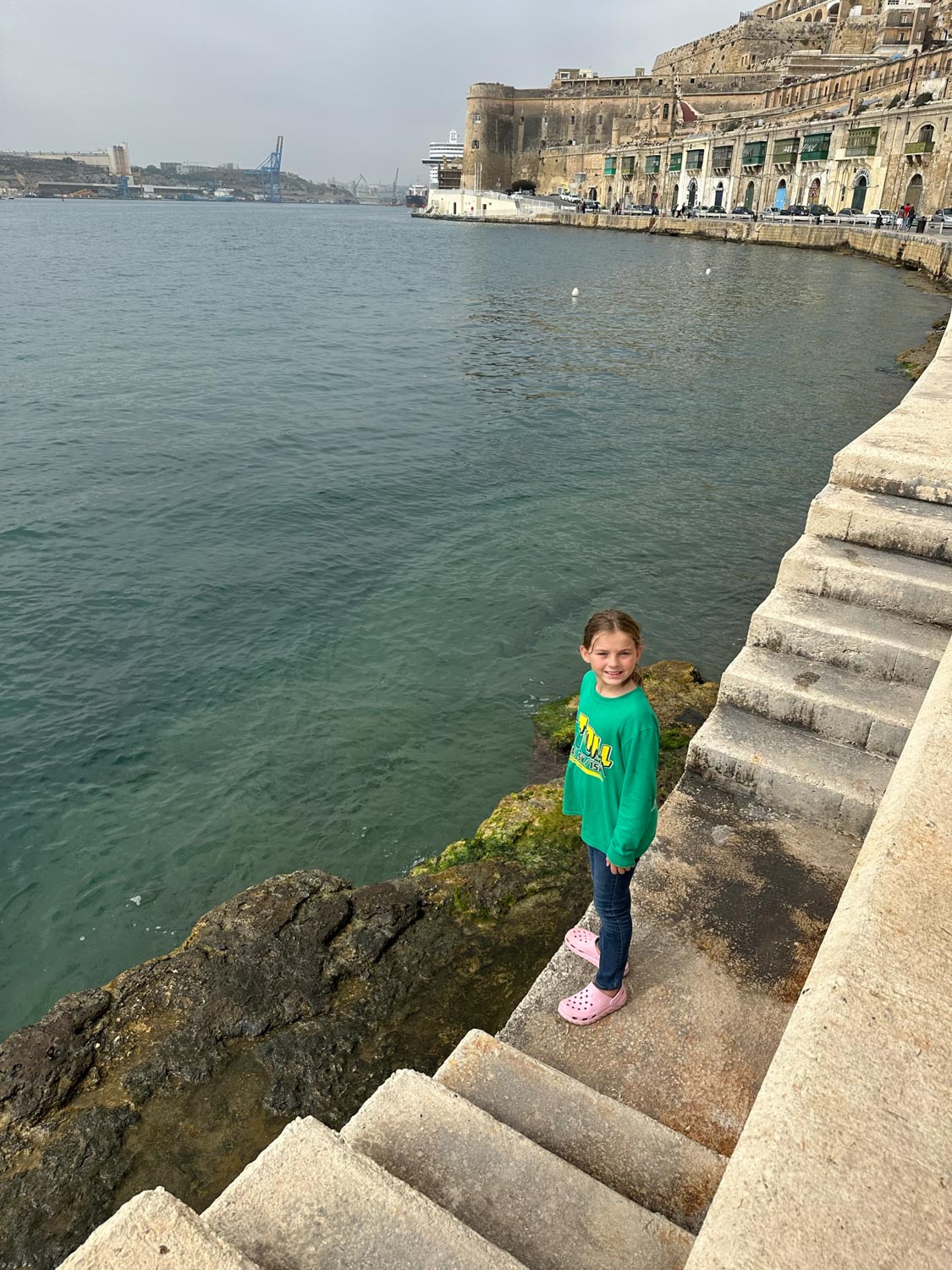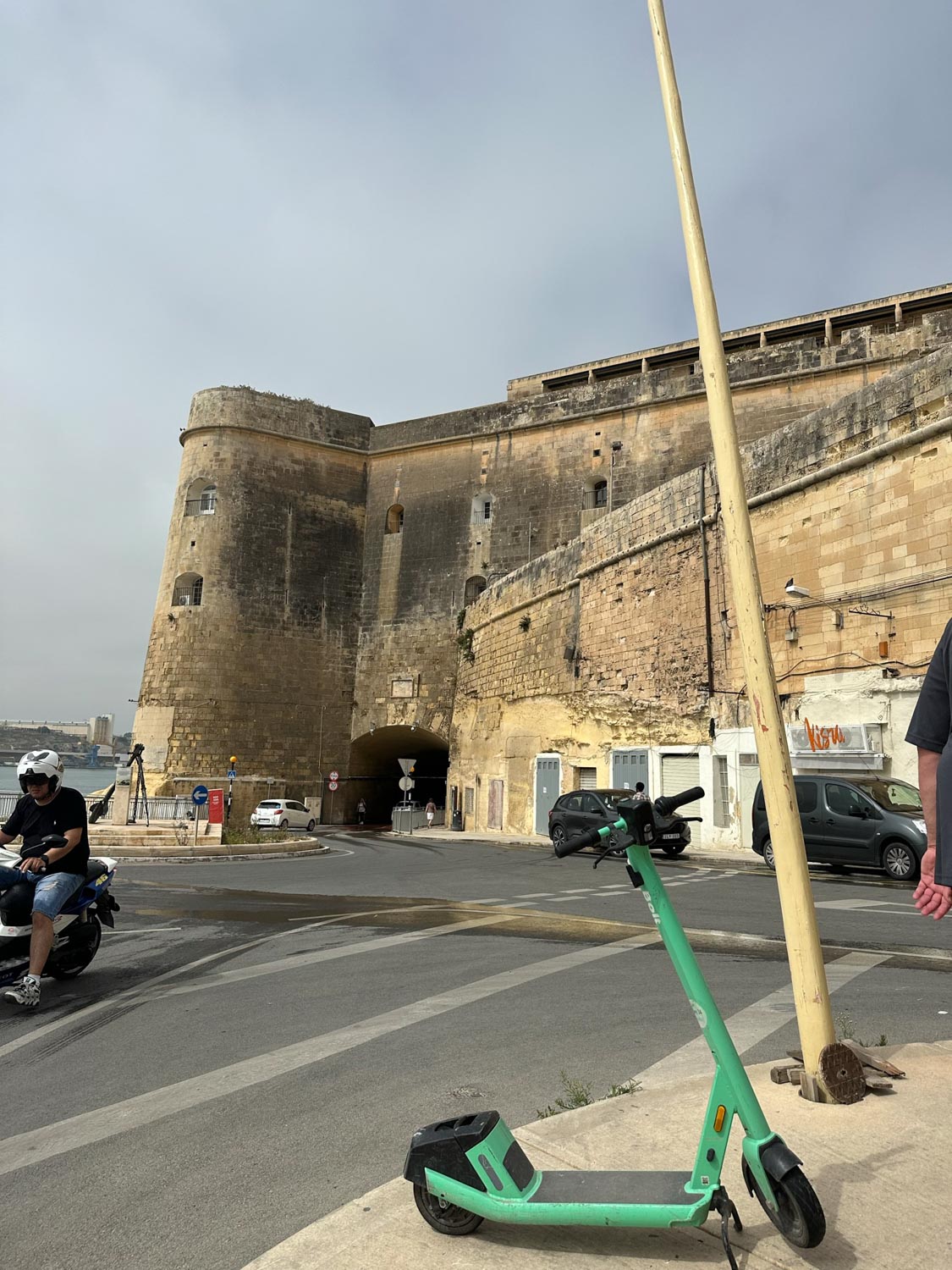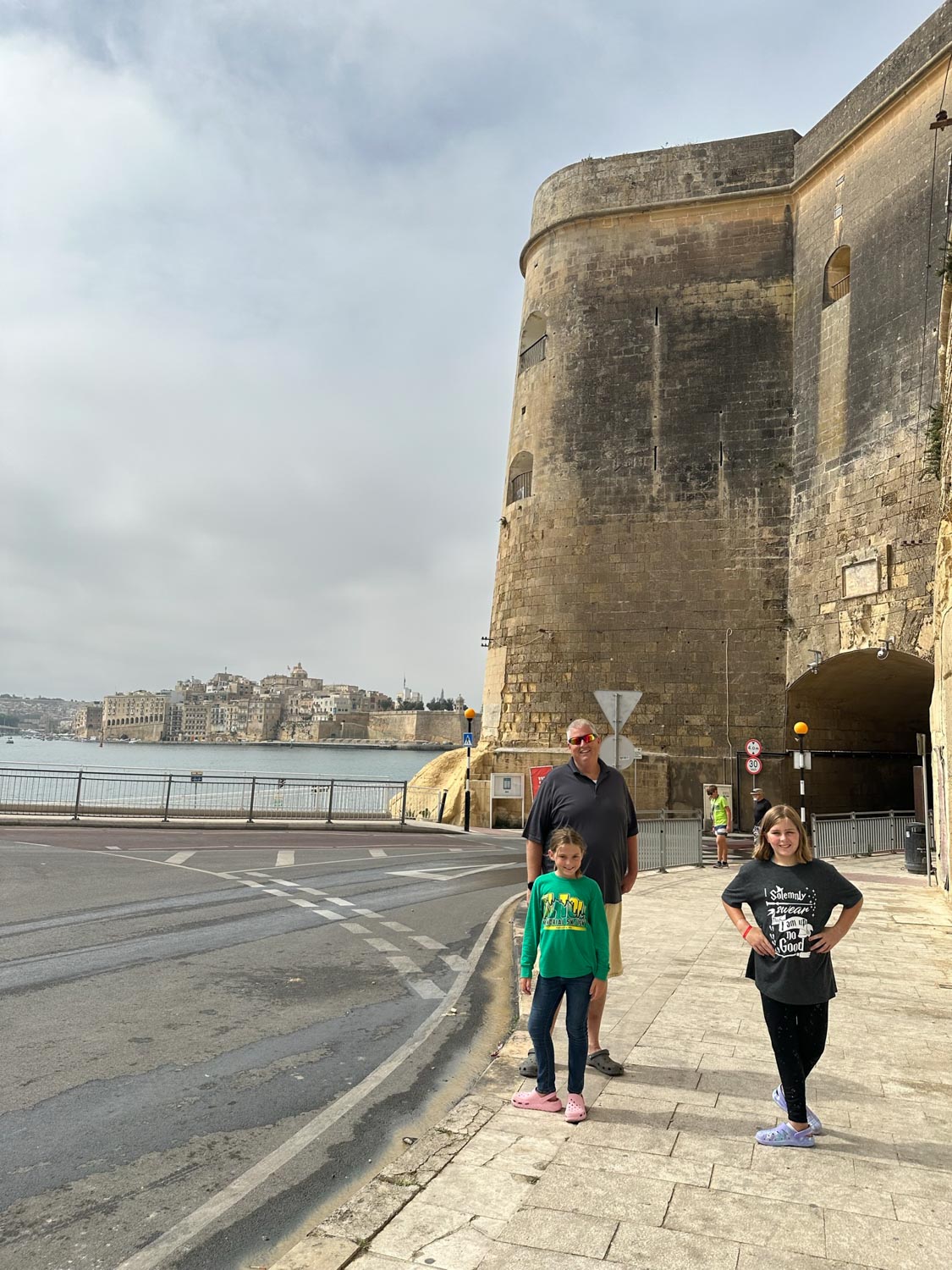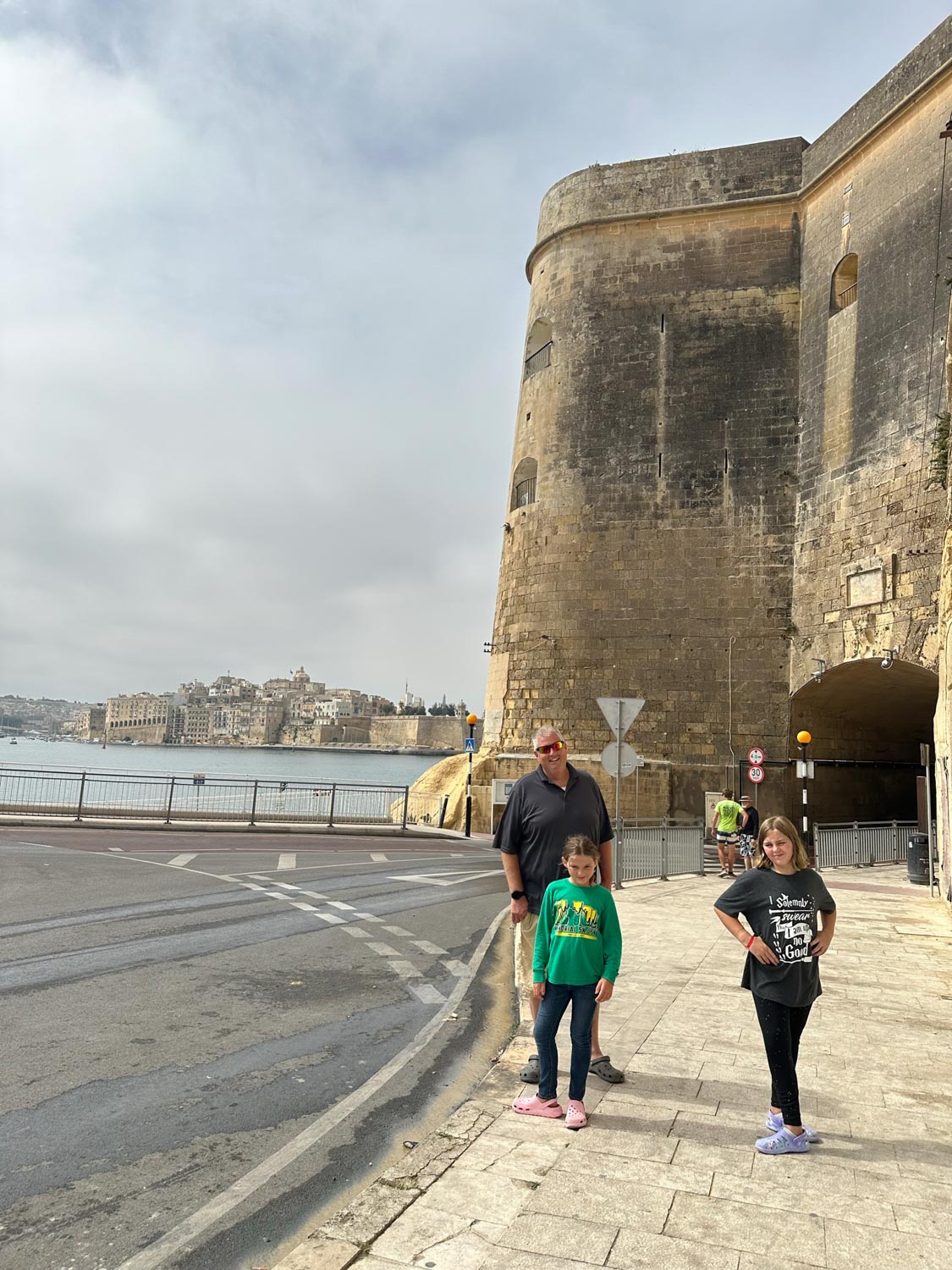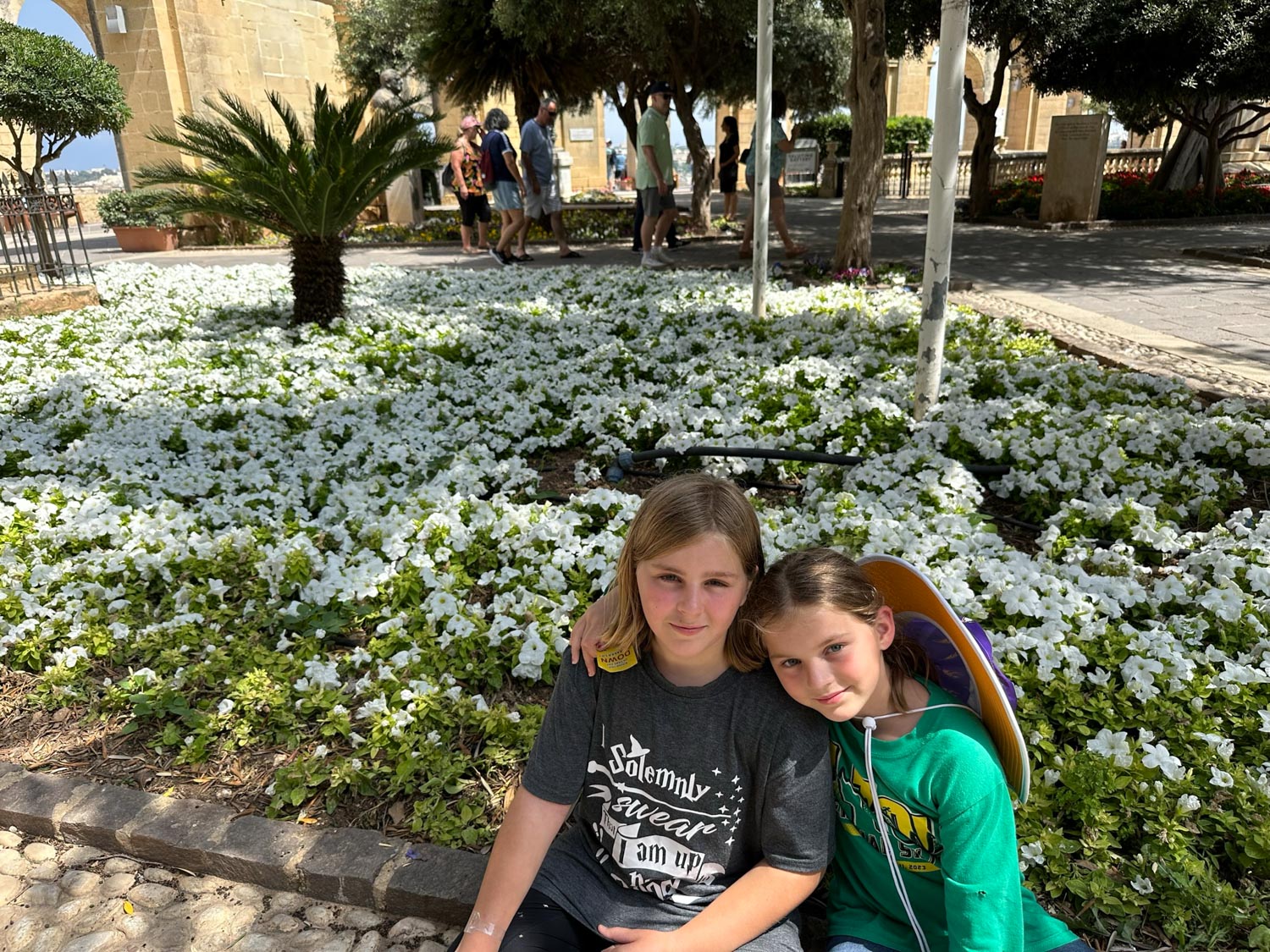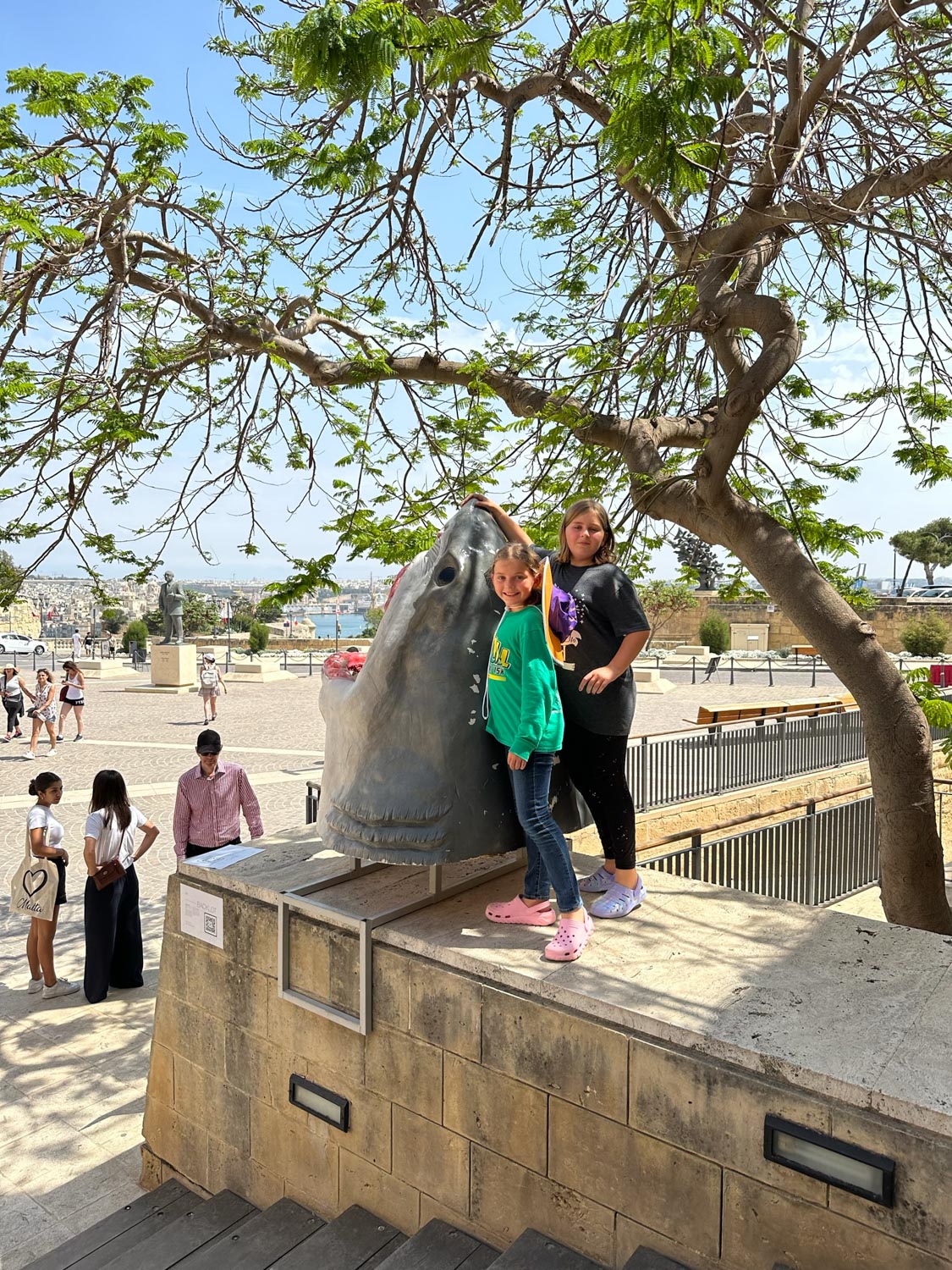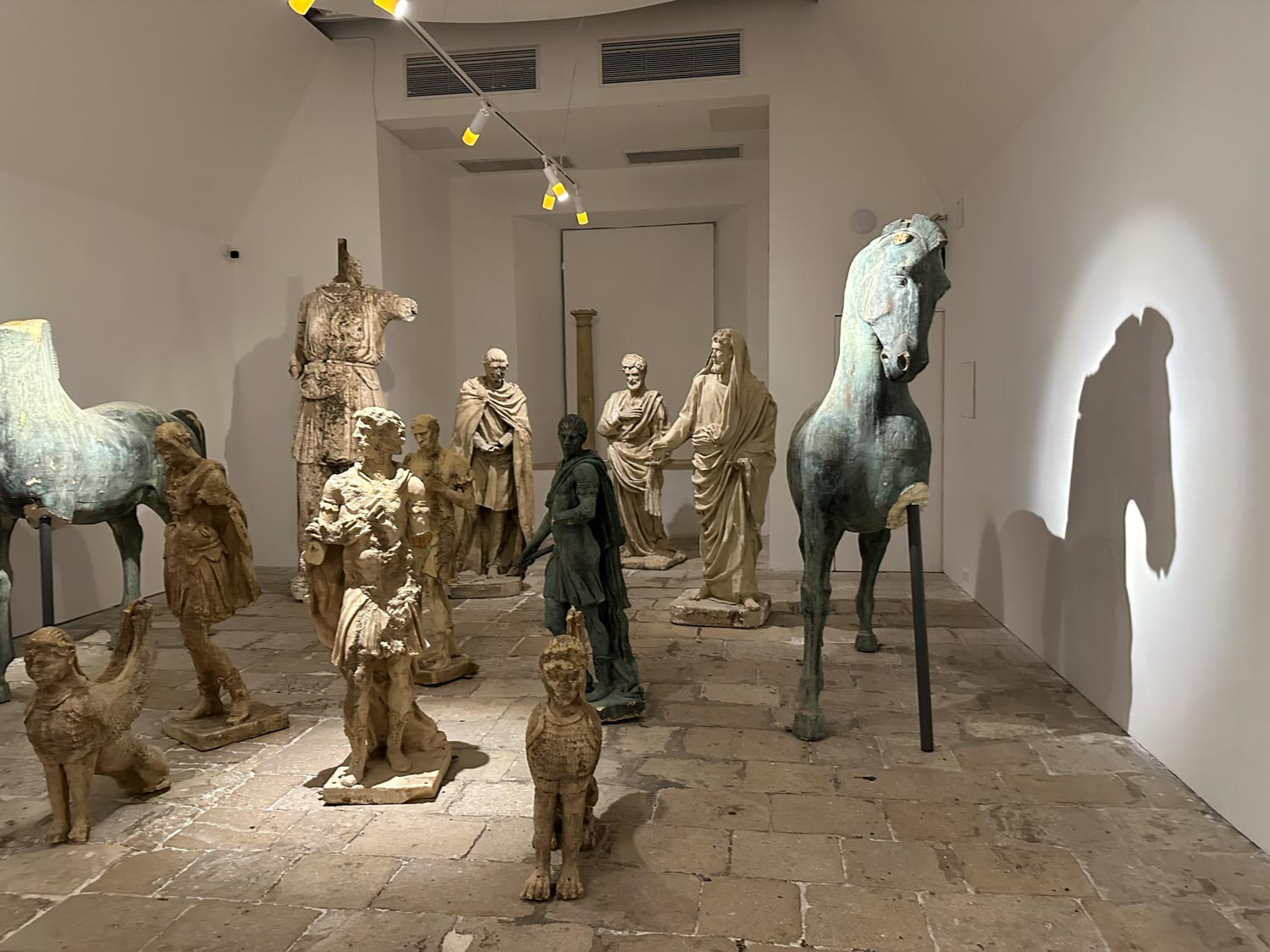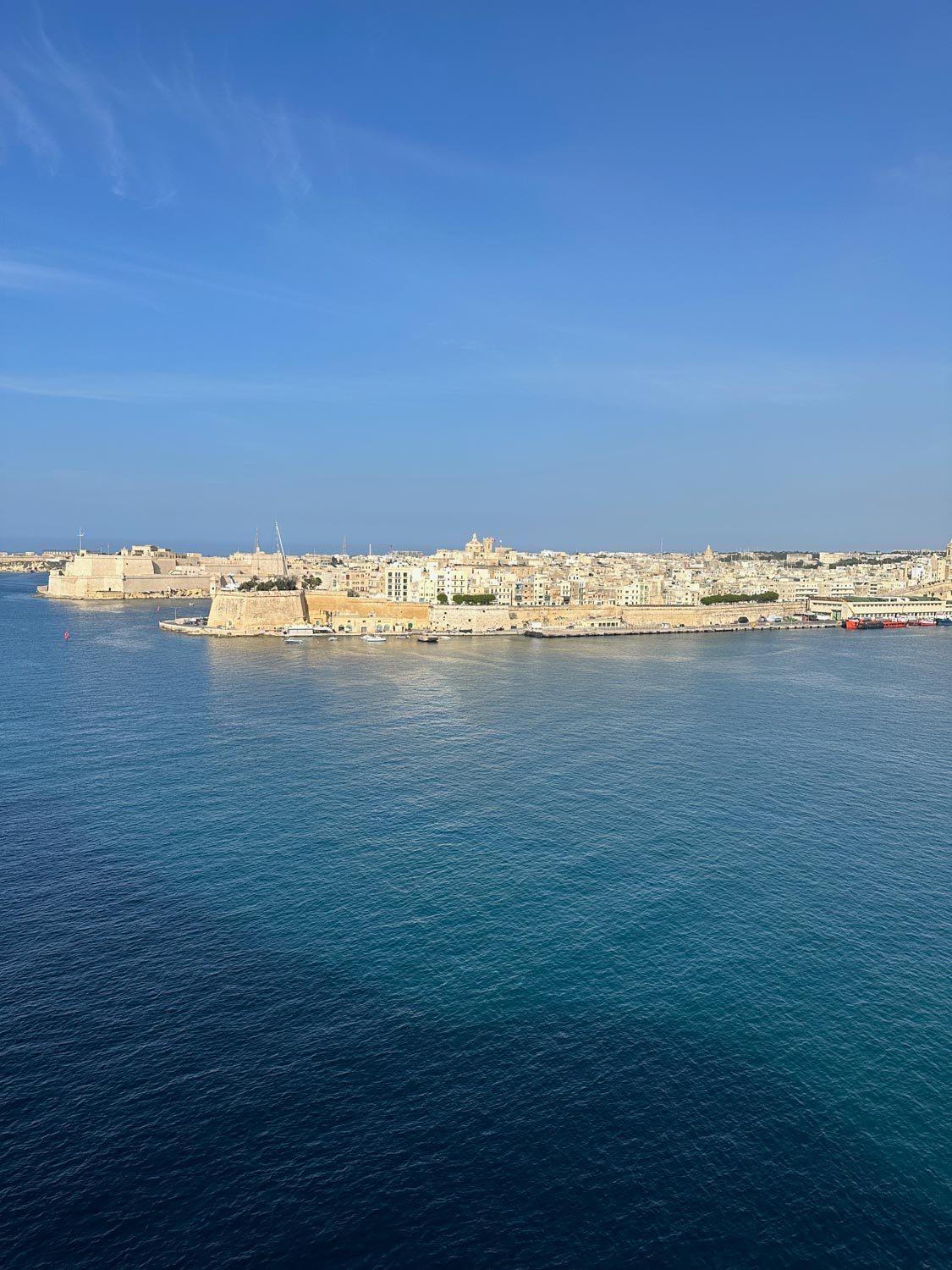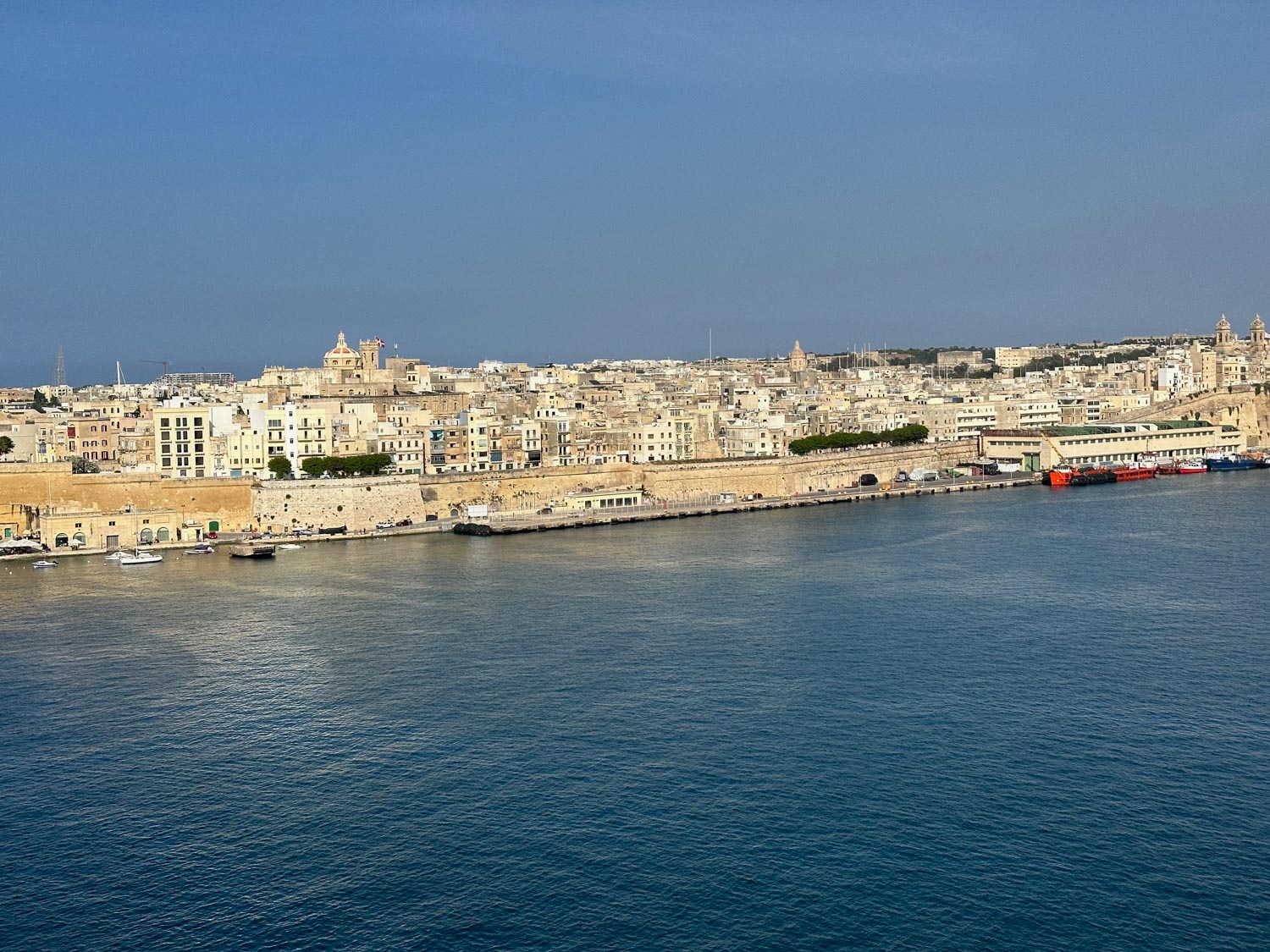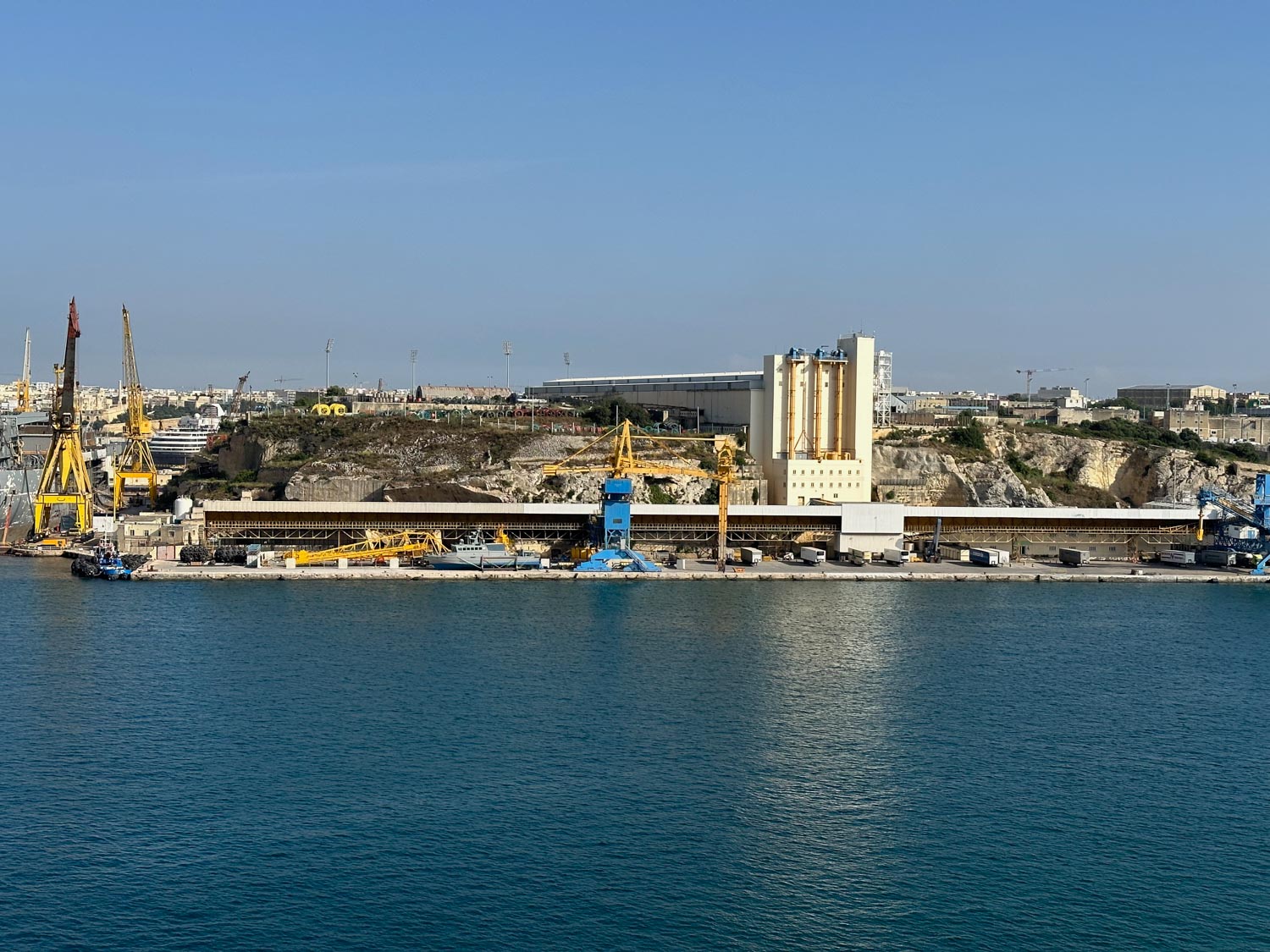Valletta, Malta

About This Stop
Our second visit to Valletta allowed us to delve even deeper into this incredibly cool and very old city that has stood as a Mediterranean fortress for centuries. This time, we focused our exploration on the massive defensive structures that have protected this strategic island for over 450 years, walking along the ancient city walls and battlements that represent some of the finest examples of military architecture in the world.
We spent considerable time walking around the old city walls that encircle this UNESCO World Heritage fortress city, marveling at the impressive limestone fortifications that the Knights of St. John constructed to defend against Ottoman invasions. The massive battlements rose dramatically from the harbor, their honey-colored stone walls telling stories of countless sieges, battles, and the strategic importance that made Malta the crossroads of Mediterranean civilizations. Walking along these ancient ramparts provided us with spectacular views across the Grand Harbour while allowing us to appreciate the engineering genius that went into creating one of the most impregnable fortress cities in history.
The battlements themselves proved to be architectural marvels, with their carefully designed bastions, gun emplacements, and defensive positions demonstrating the sophisticated military thinking of the 16th century. As we explored these fortifications, we could almost hear the echoes of history reverberating through the stone corridors and imagine the defenders who once stood watch over these walls, scanning the horizon for approaching enemy fleets. The sheer scale and preservation of these defensive works made it clear why Valletta is considered one of the most concentrated historic areas in the world.
Our exploration led us to discover lots of cool churches scattered throughout the fortress city, each one representing different periods of Malta's rich religious heritage. These sacred buildings showcased everything from baroque splendor to medieval simplicity, with ornate altars, intricate stone carvings, and stunning architectural details that reflected the deep faith and artistic sophistication of the various cultures that have called Malta home. Every church we visited seemed to hold its own unique treasures, from ancient relics to masterful paintings that had survived centuries of Mediterranean history.
This second encounter with Valletta reinforced our appreciation for what is truly a really cool very old city that has managed to preserve its authentic character despite the passage of time. Walking among these ancient walls, exploring these remarkable churches, and absorbing the atmosphere of this living fortress reminded us that some places possess a timeless quality that transcends ordinary tourist experiences, offering instead a genuine connection to the great sweep of European and Mediterranean history.
We spent considerable time walking around the old city walls that encircle this UNESCO World Heritage fortress city, marveling at the impressive limestone fortifications that the Knights of St. John constructed to defend against Ottoman invasions. The massive battlements rose dramatically from the harbor, their honey-colored stone walls telling stories of countless sieges, battles, and the strategic importance that made Malta the crossroads of Mediterranean civilizations. Walking along these ancient ramparts provided us with spectacular views across the Grand Harbour while allowing us to appreciate the engineering genius that went into creating one of the most impregnable fortress cities in history.
The battlements themselves proved to be architectural marvels, with their carefully designed bastions, gun emplacements, and defensive positions demonstrating the sophisticated military thinking of the 16th century. As we explored these fortifications, we could almost hear the echoes of history reverberating through the stone corridors and imagine the defenders who once stood watch over these walls, scanning the horizon for approaching enemy fleets. The sheer scale and preservation of these defensive works made it clear why Valletta is considered one of the most concentrated historic areas in the world.
Our exploration led us to discover lots of cool churches scattered throughout the fortress city, each one representing different periods of Malta's rich religious heritage. These sacred buildings showcased everything from baroque splendor to medieval simplicity, with ornate altars, intricate stone carvings, and stunning architectural details that reflected the deep faith and artistic sophistication of the various cultures that have called Malta home. Every church we visited seemed to hold its own unique treasures, from ancient relics to masterful paintings that had survived centuries of Mediterranean history.
This second encounter with Valletta reinforced our appreciation for what is truly a really cool very old city that has managed to preserve its authentic character despite the passage of time. Walking among these ancient walls, exploring these remarkable churches, and absorbing the atmosphere of this living fortress reminded us that some places possess a timeless quality that transcends ordinary tourist experiences, offering instead a genuine connection to the great sweep of European and Mediterranean history.
